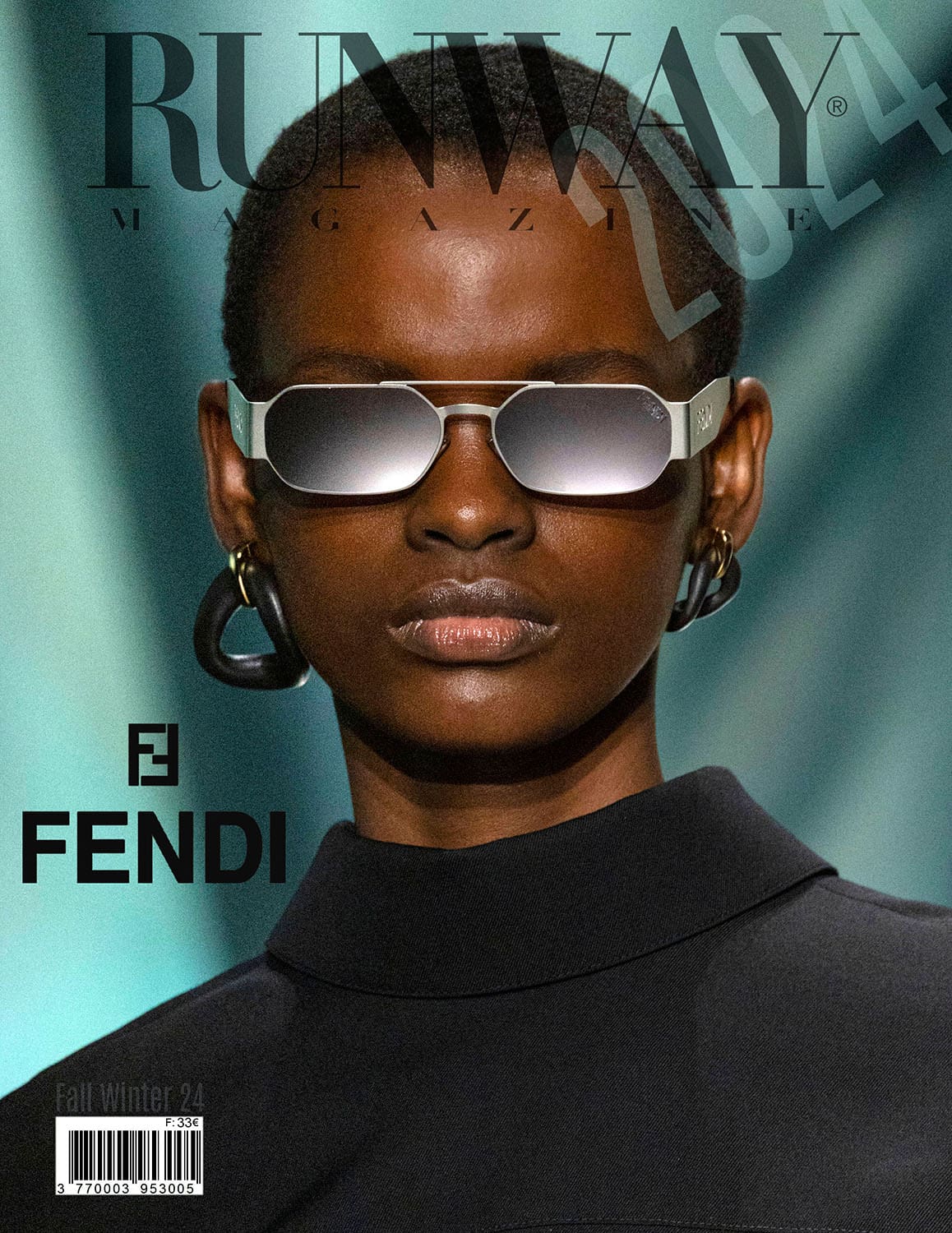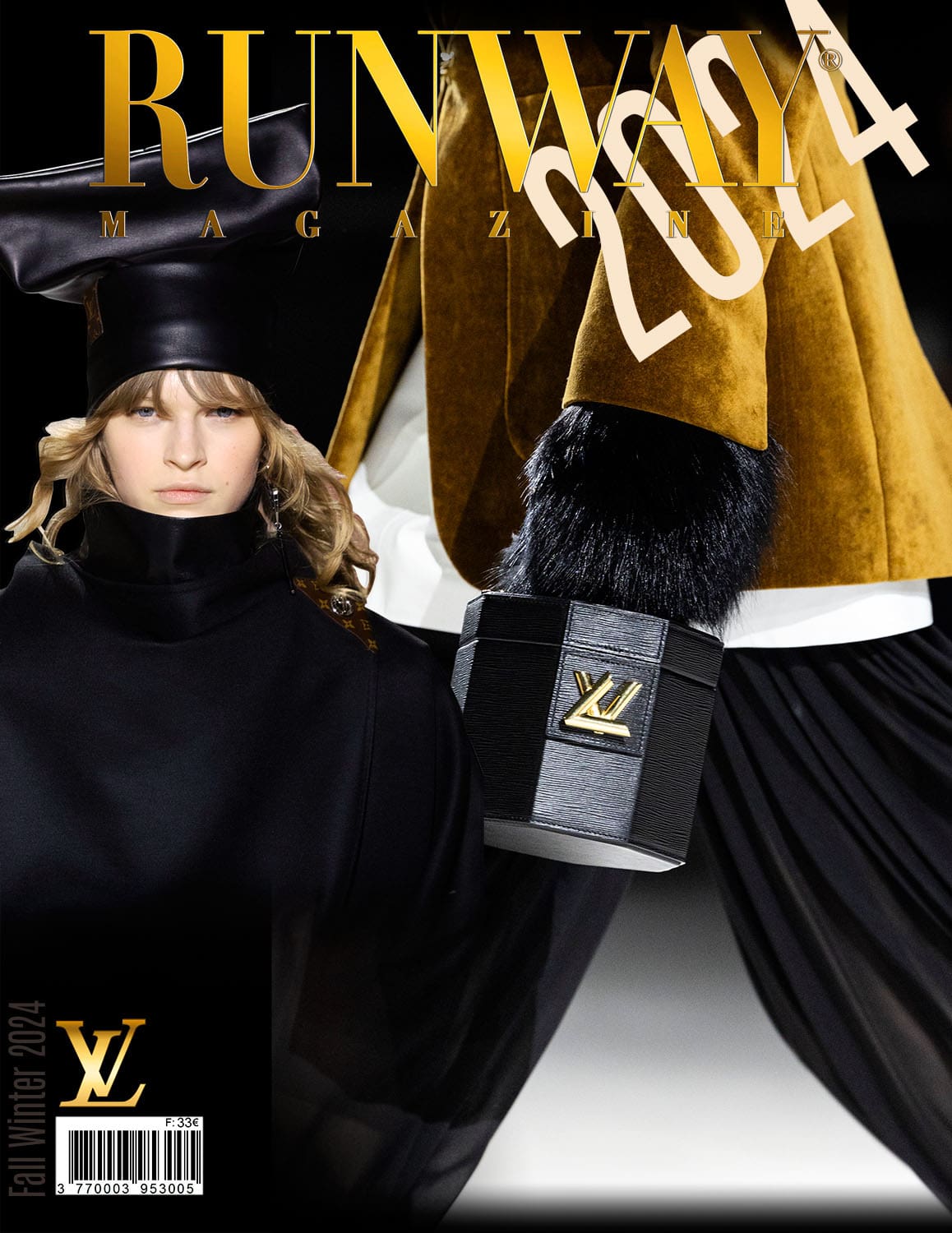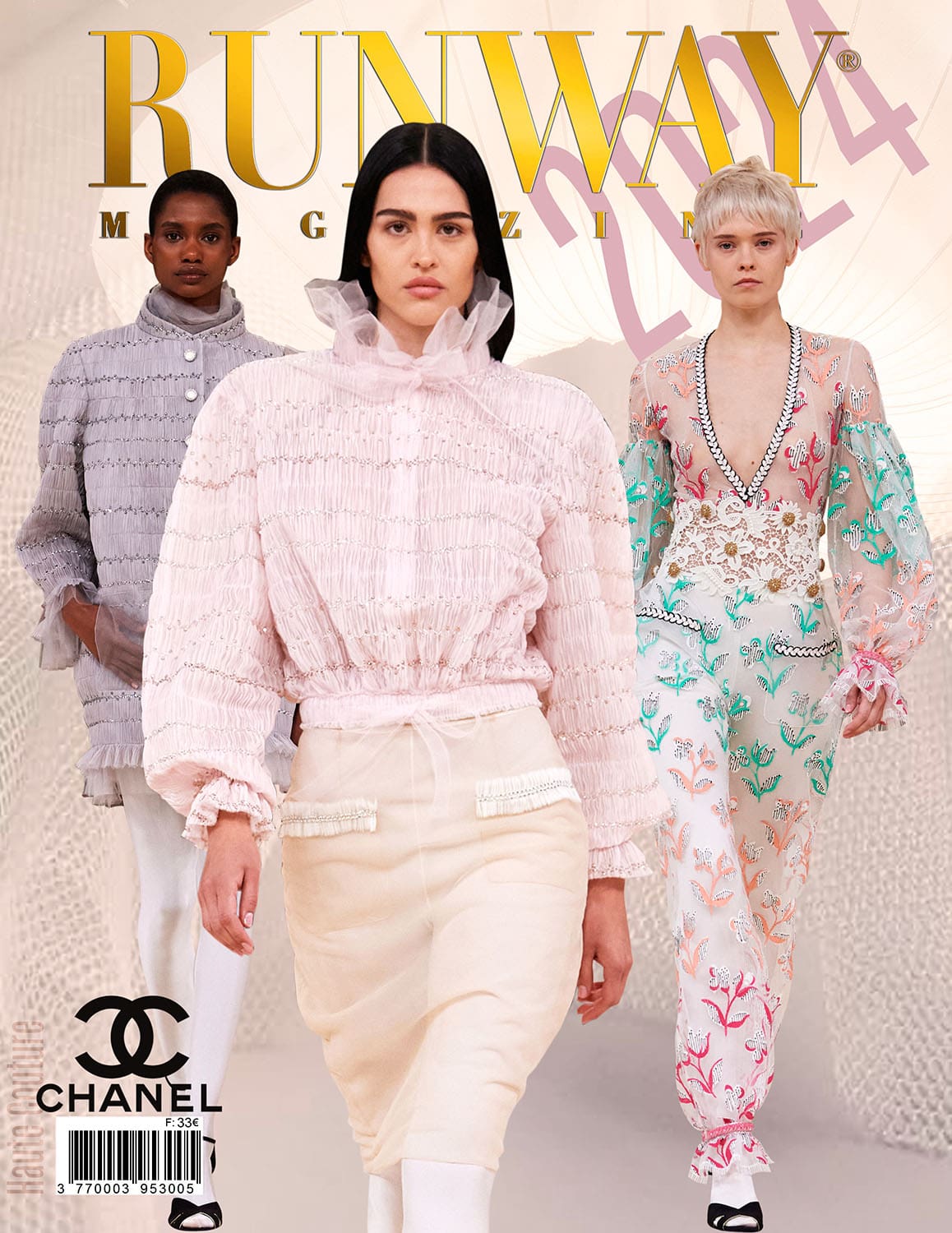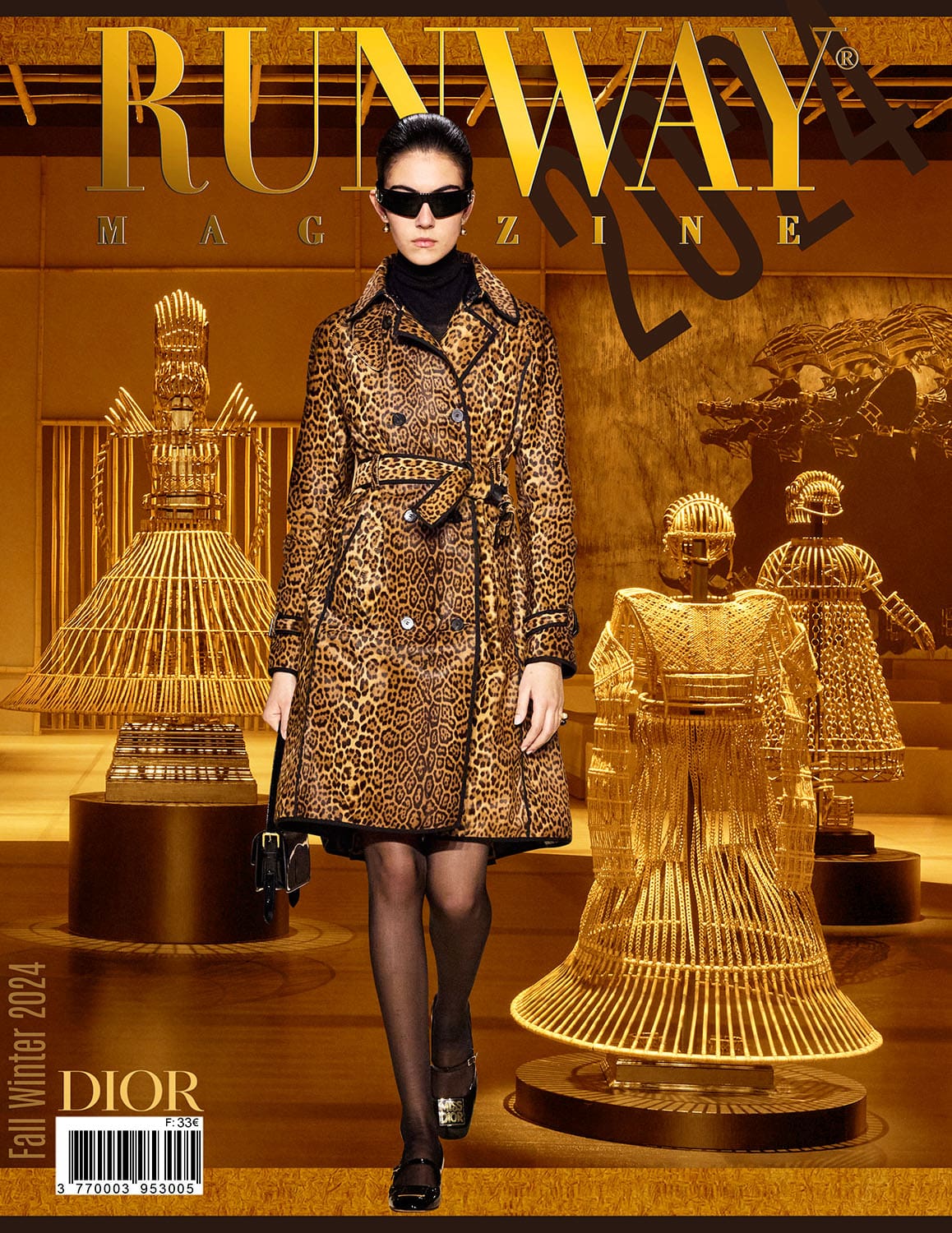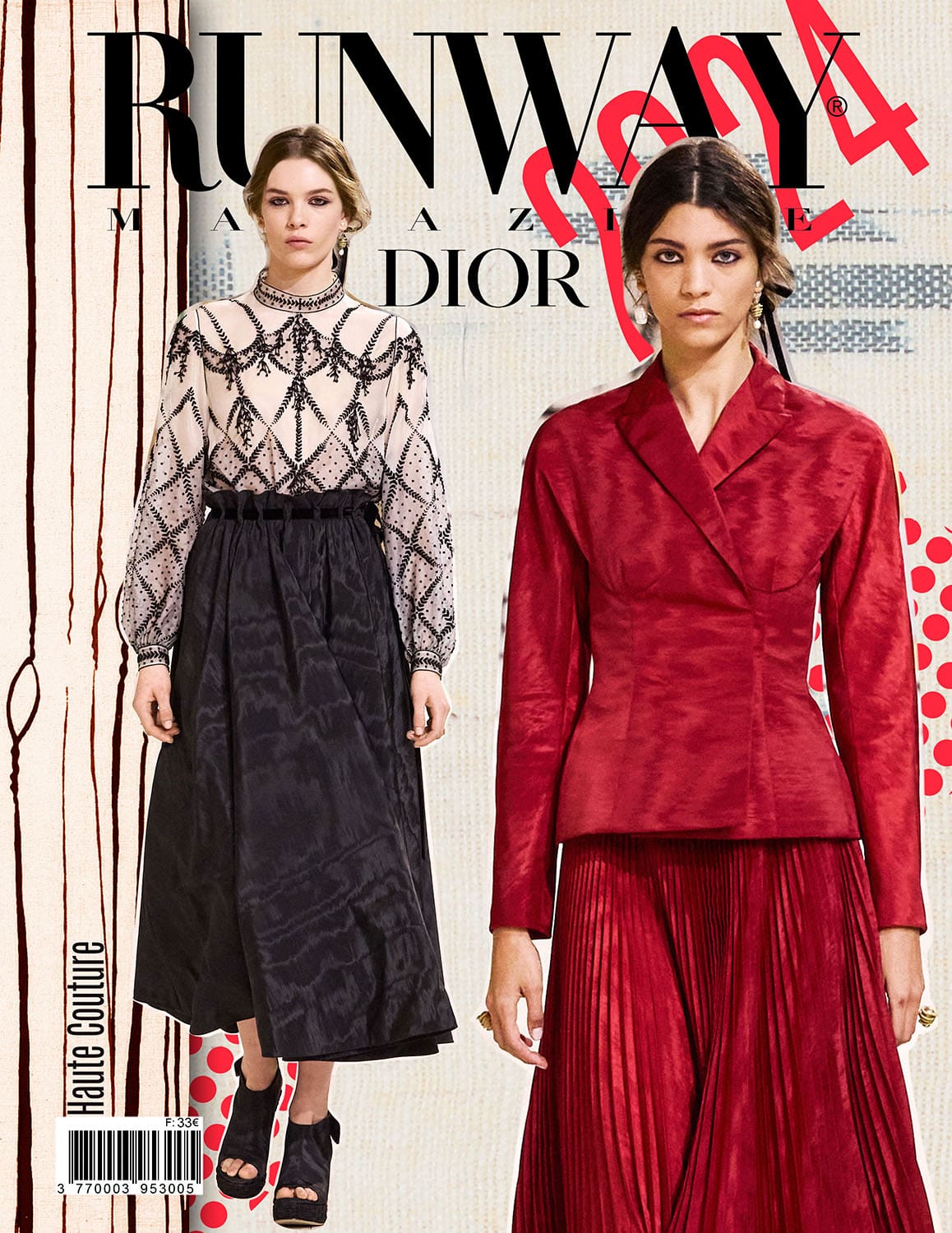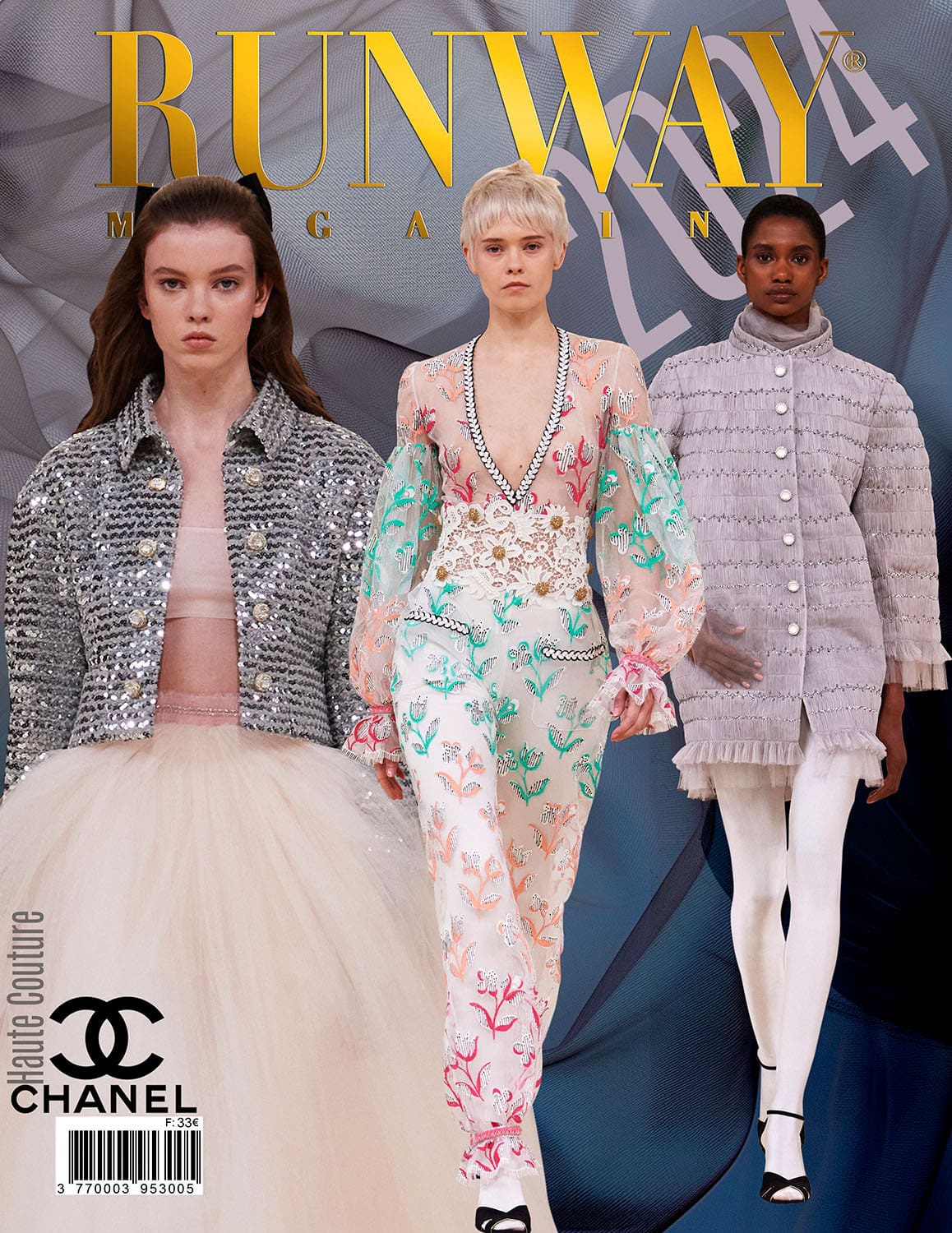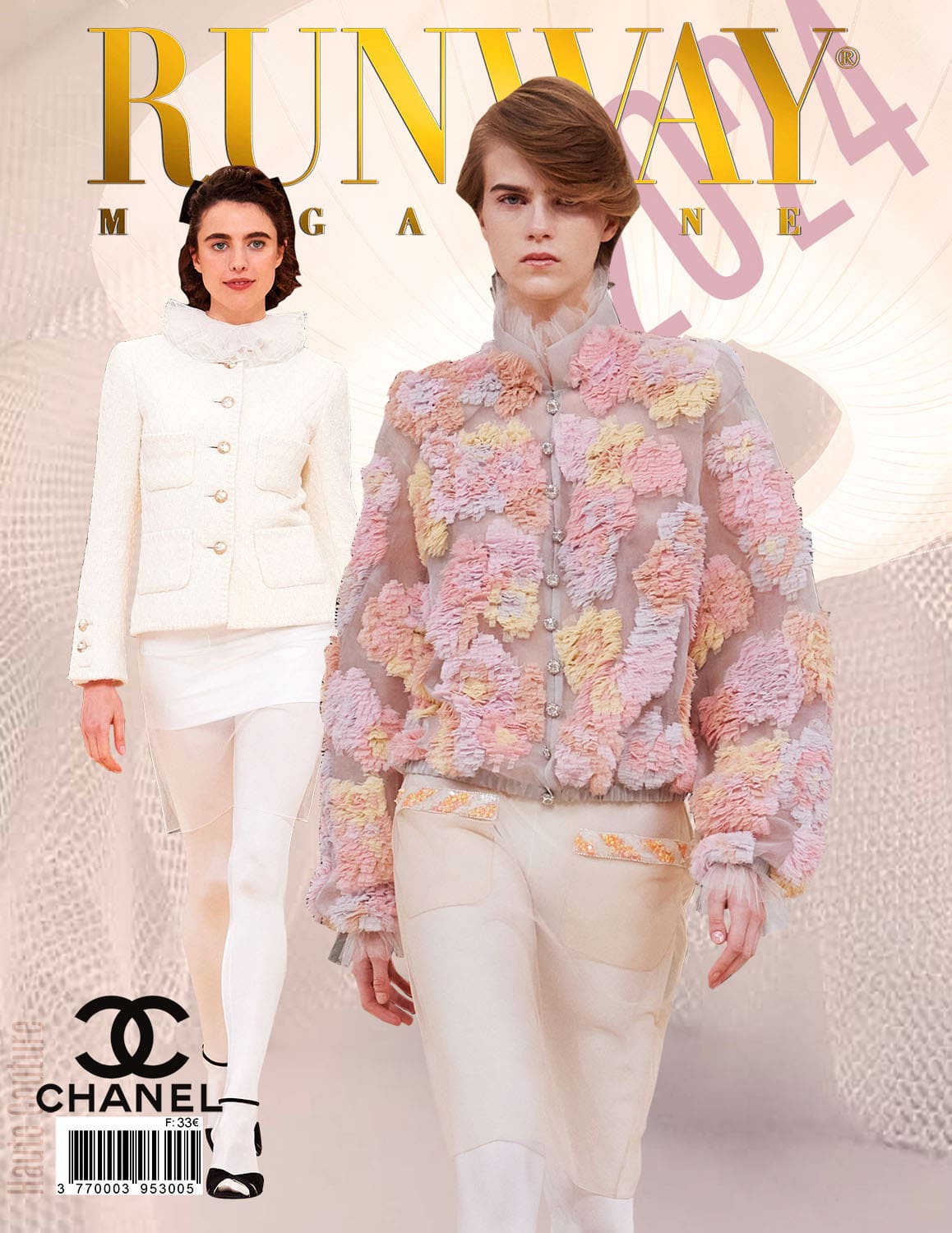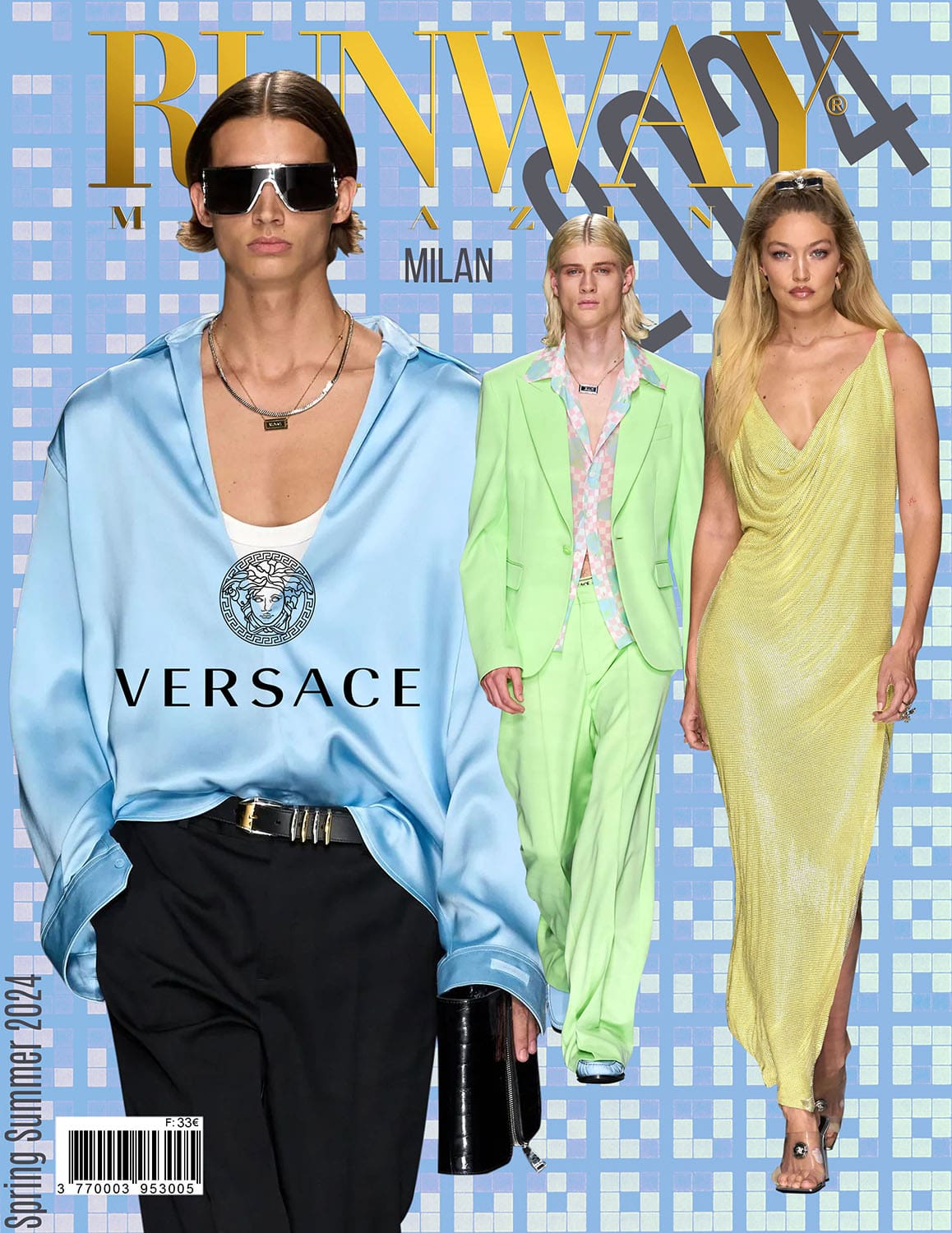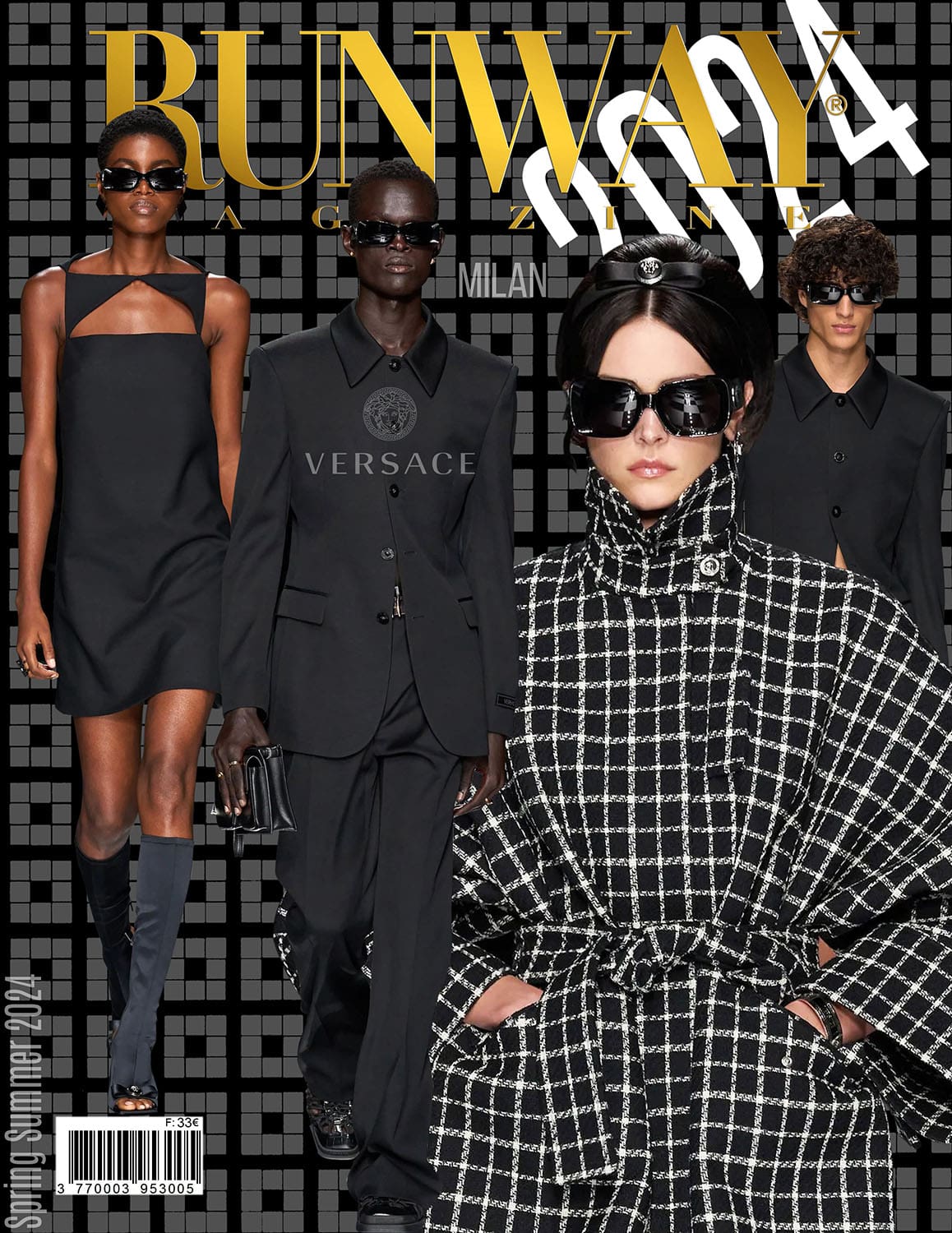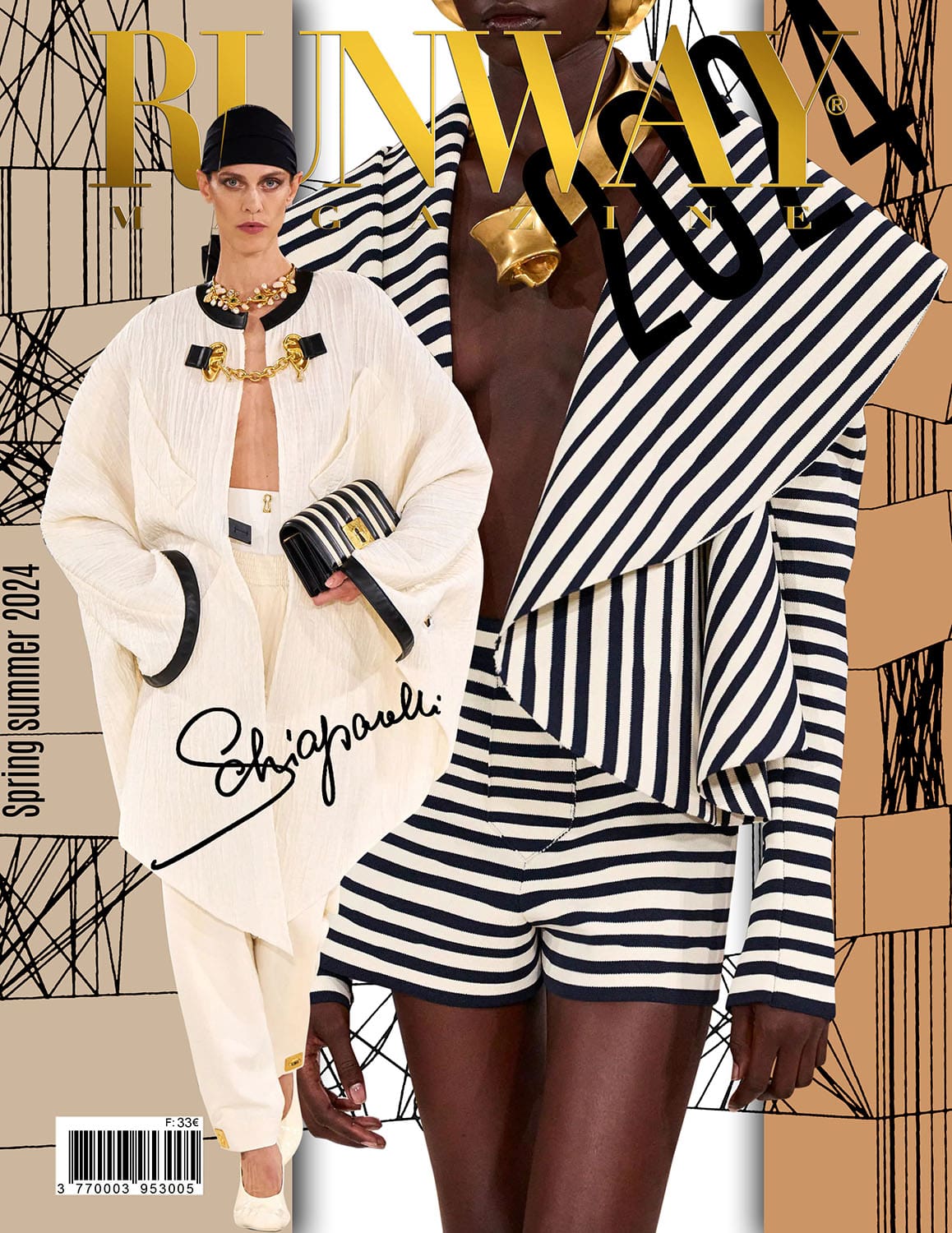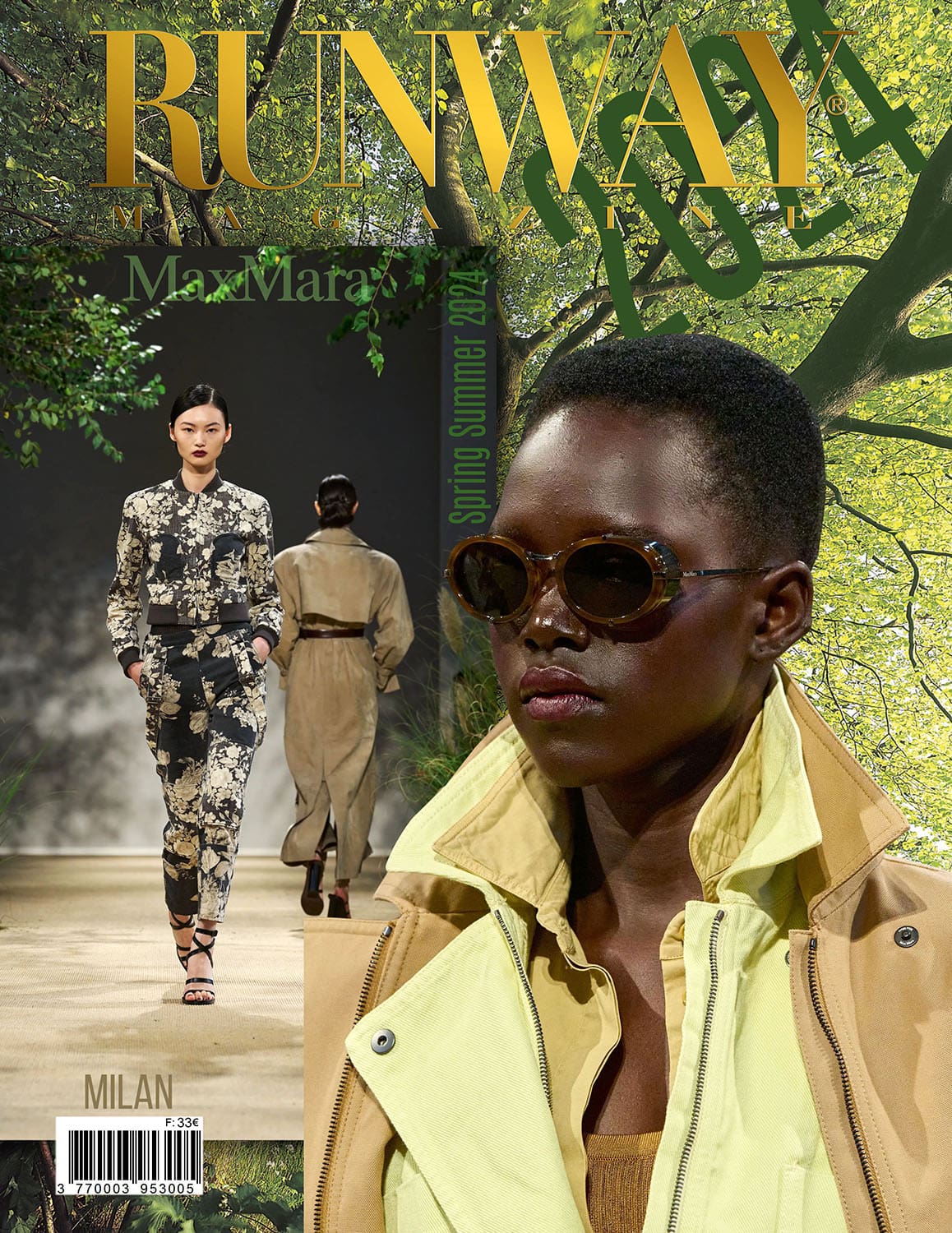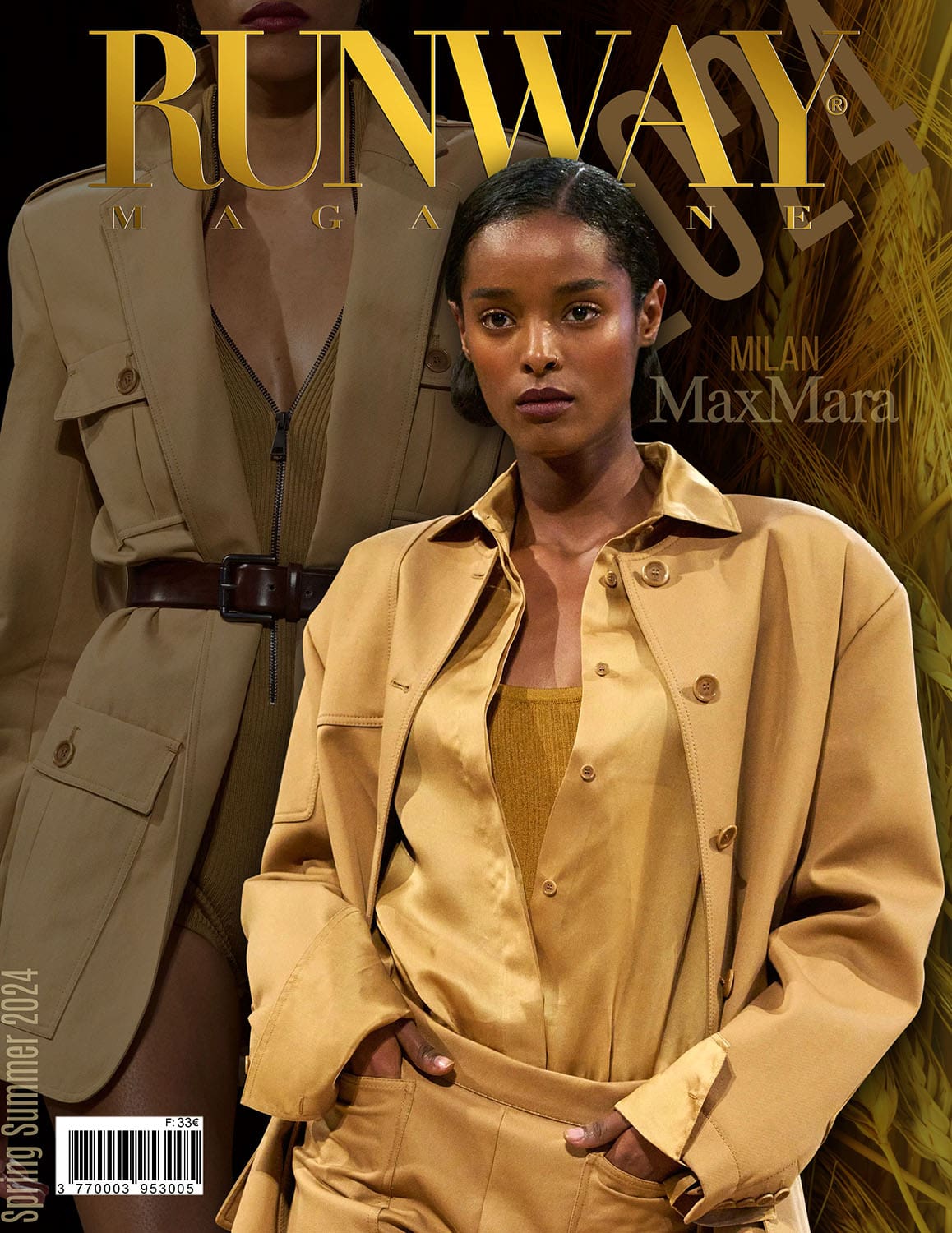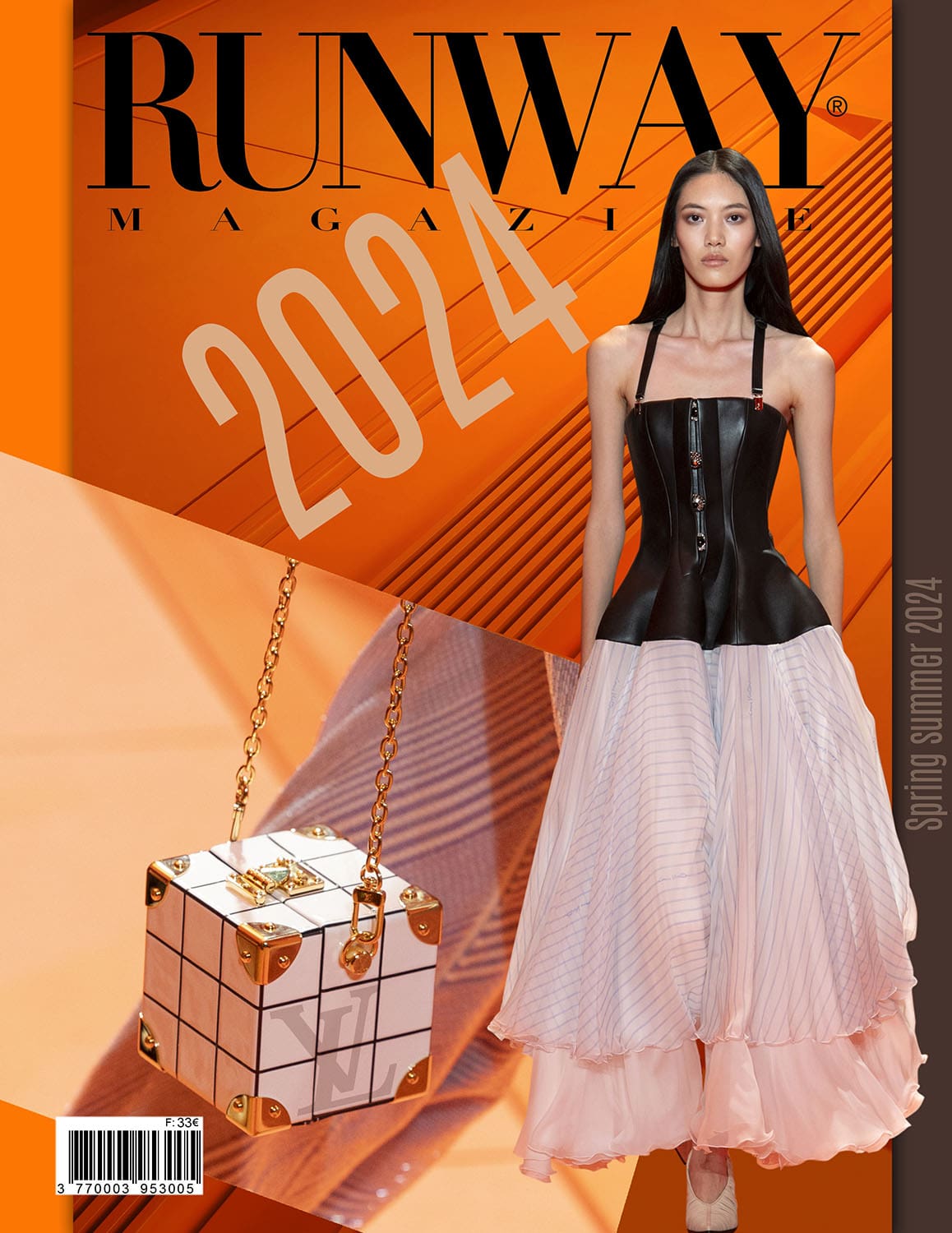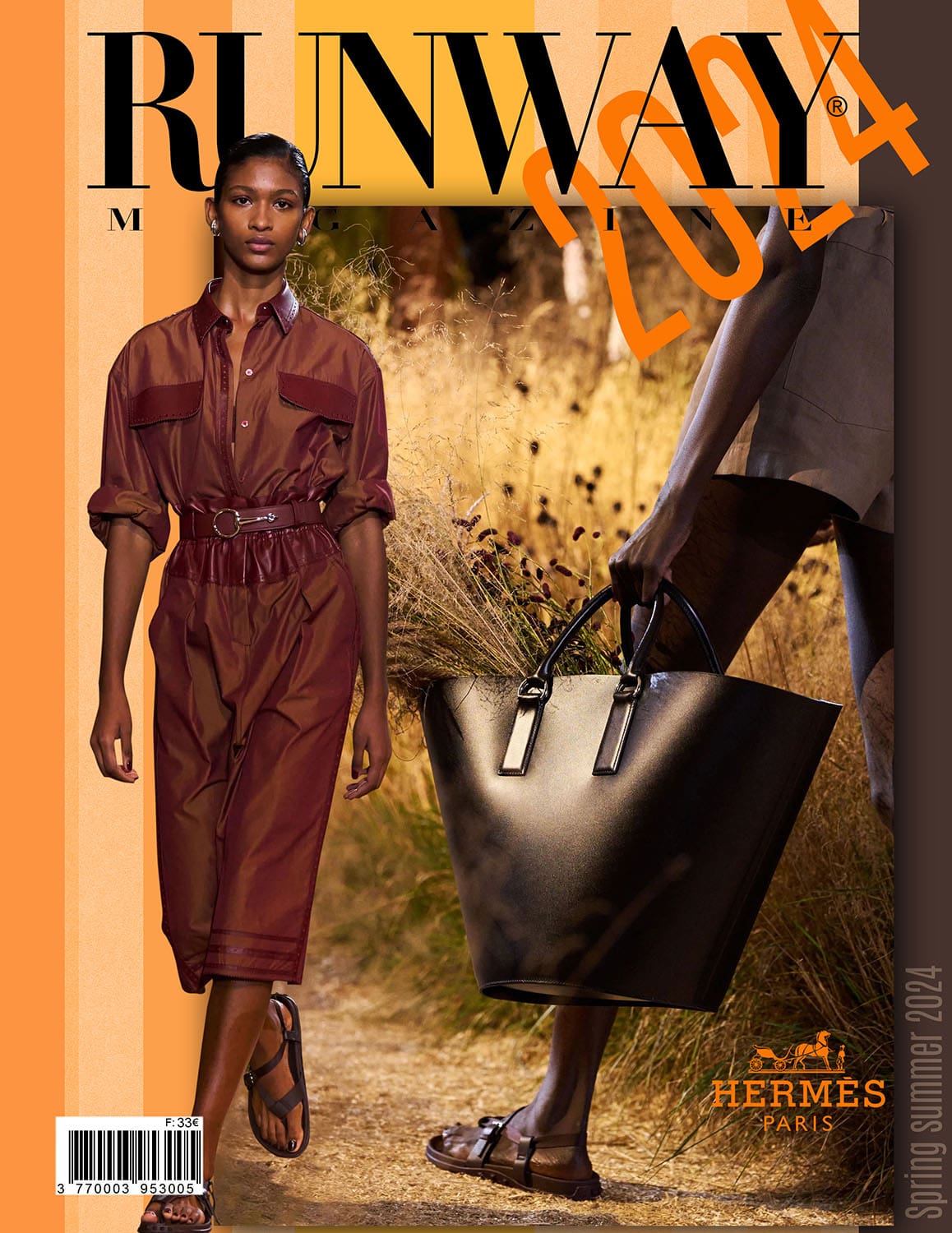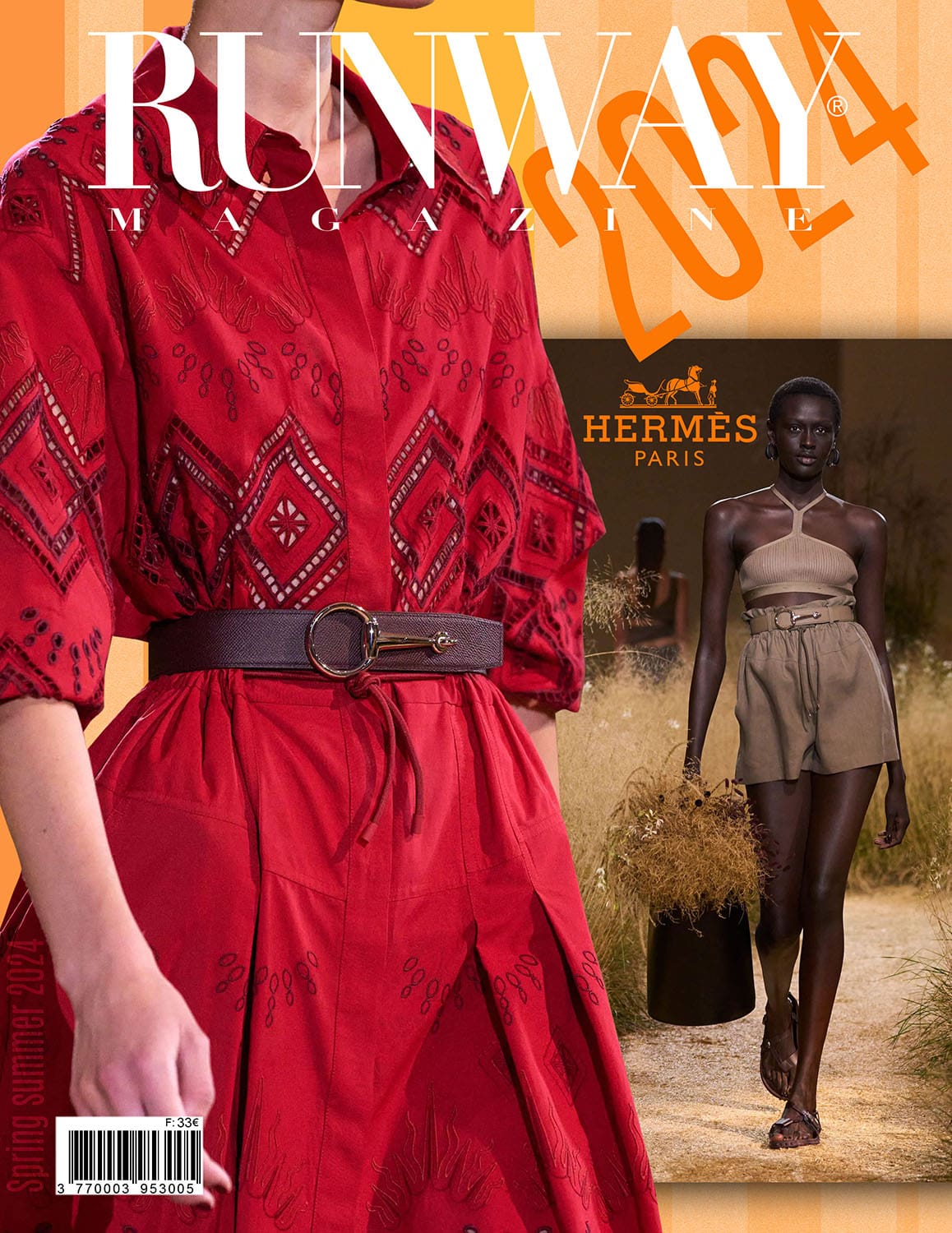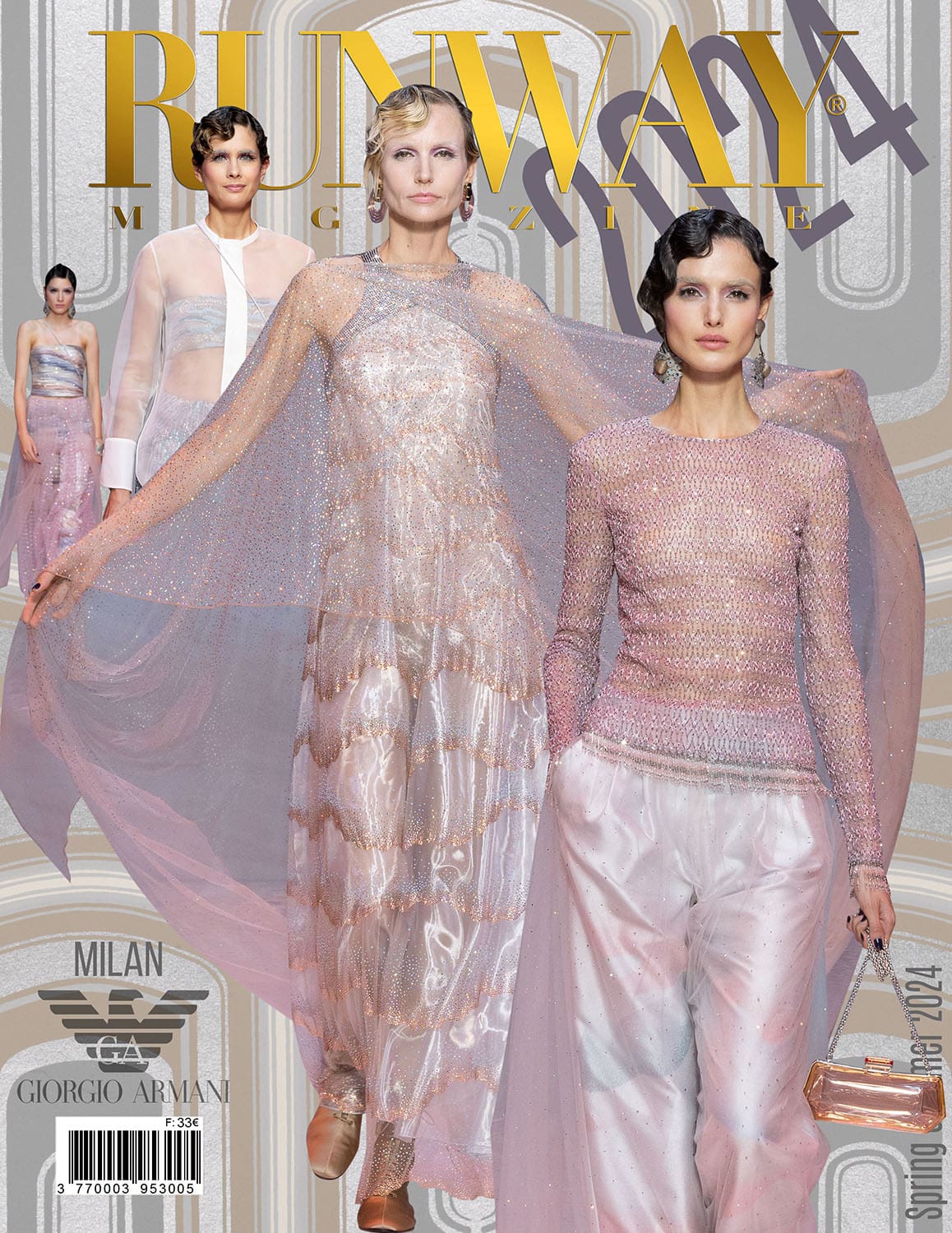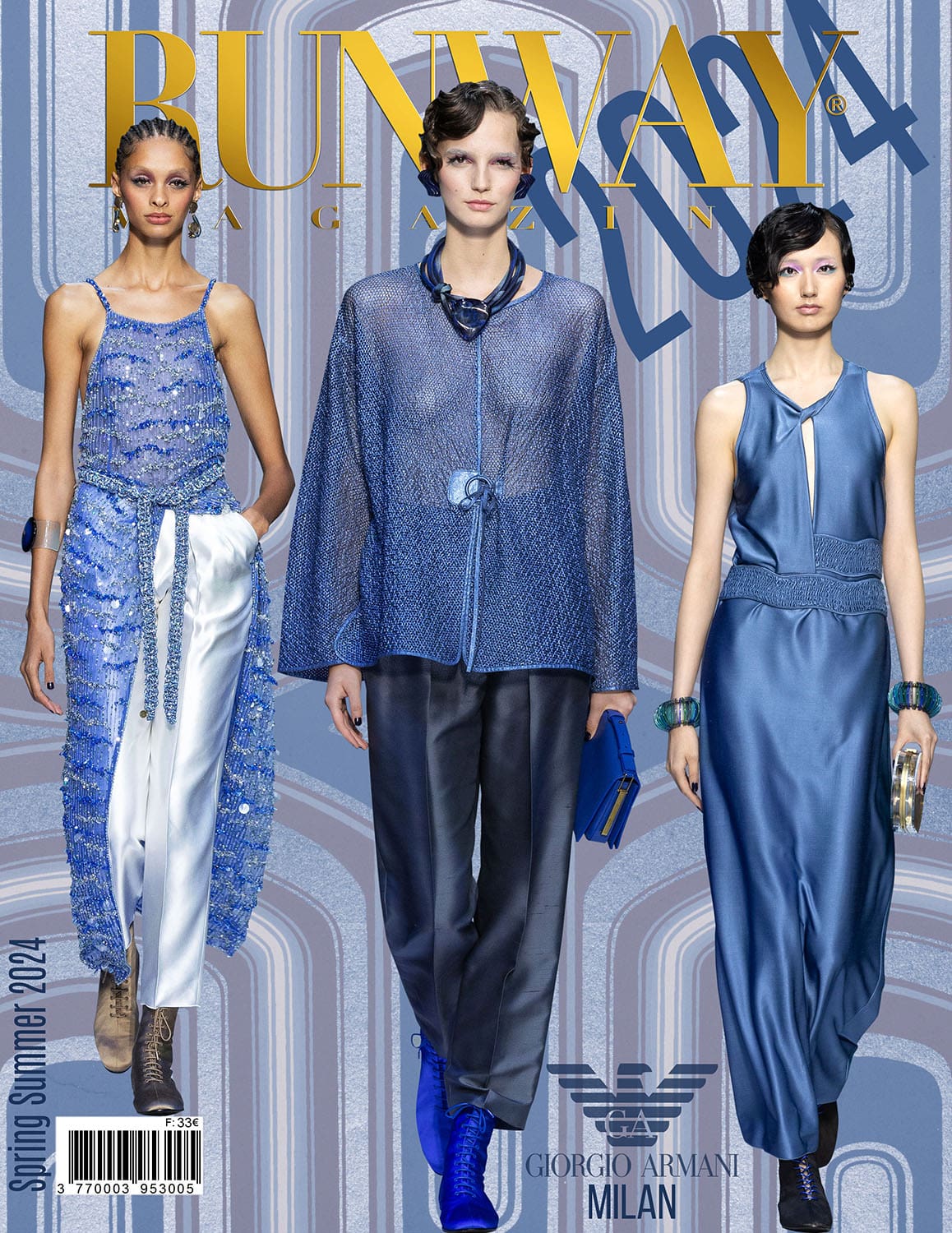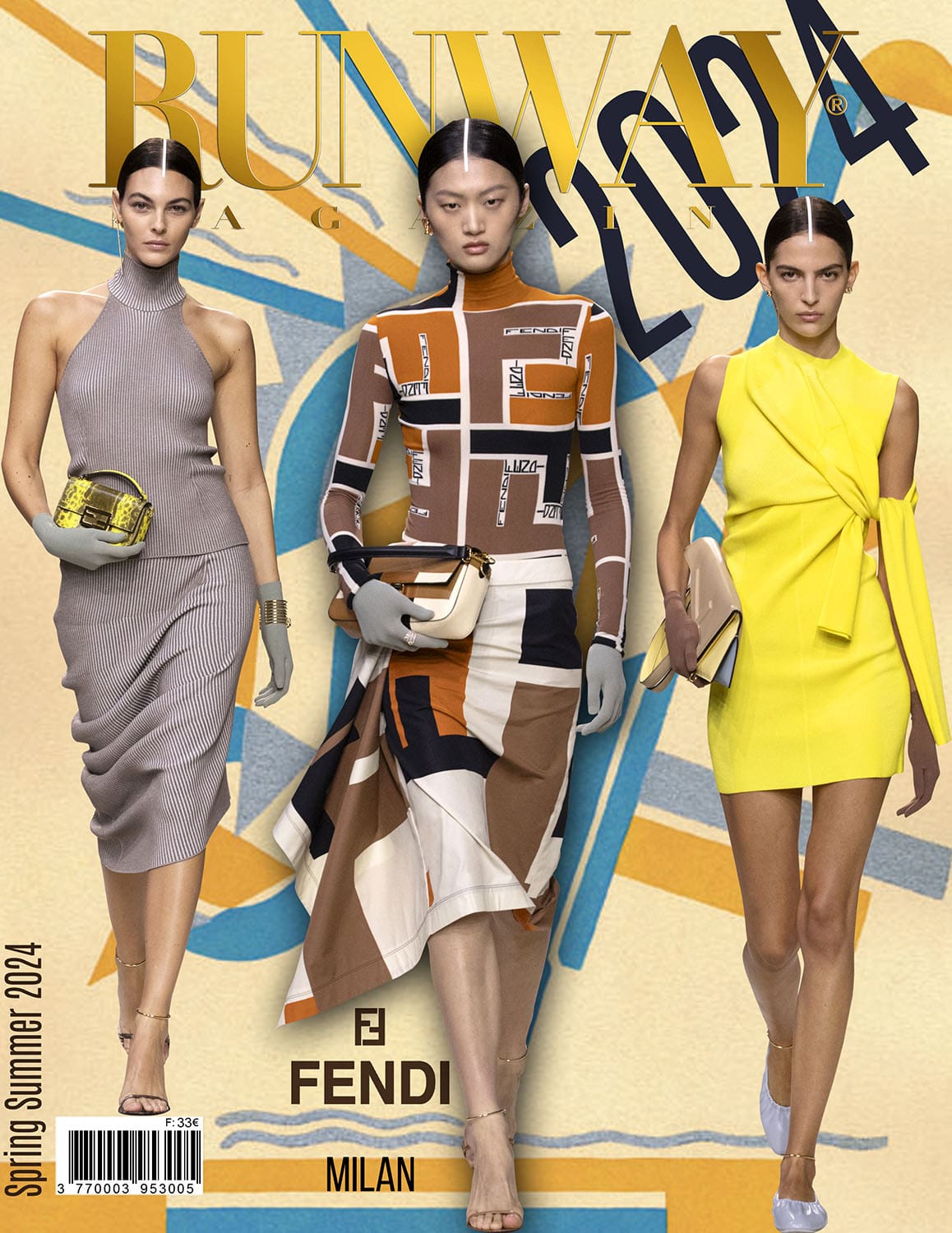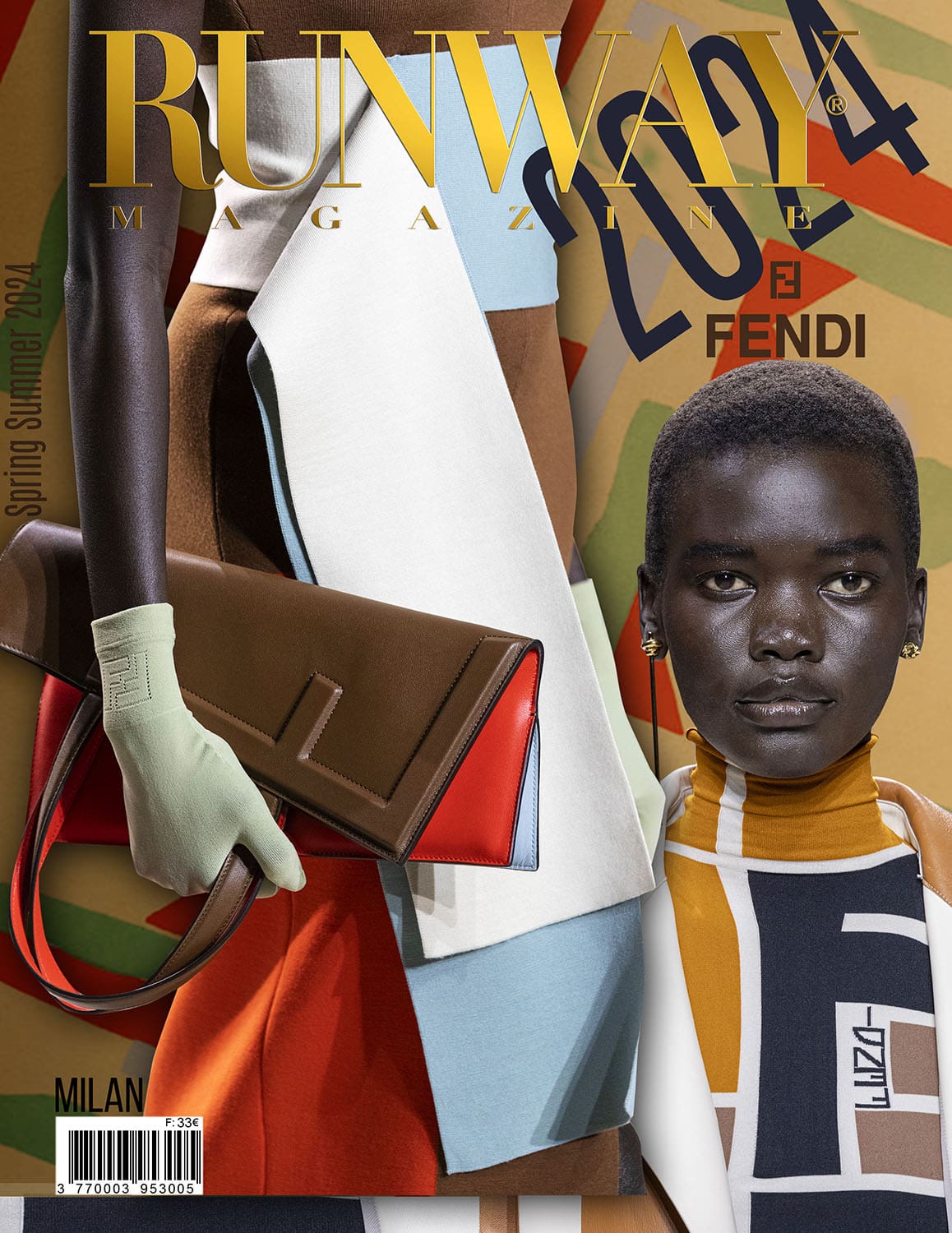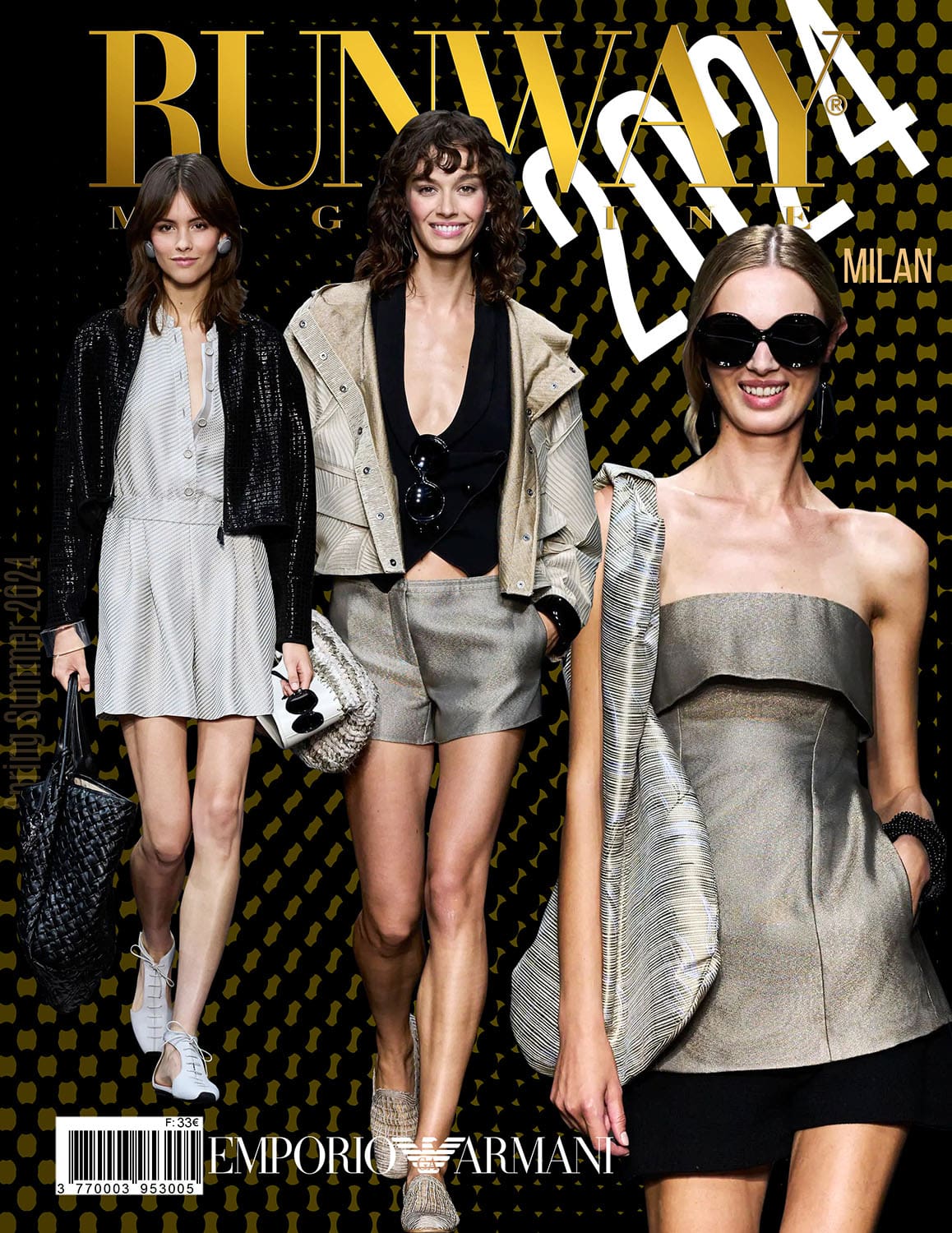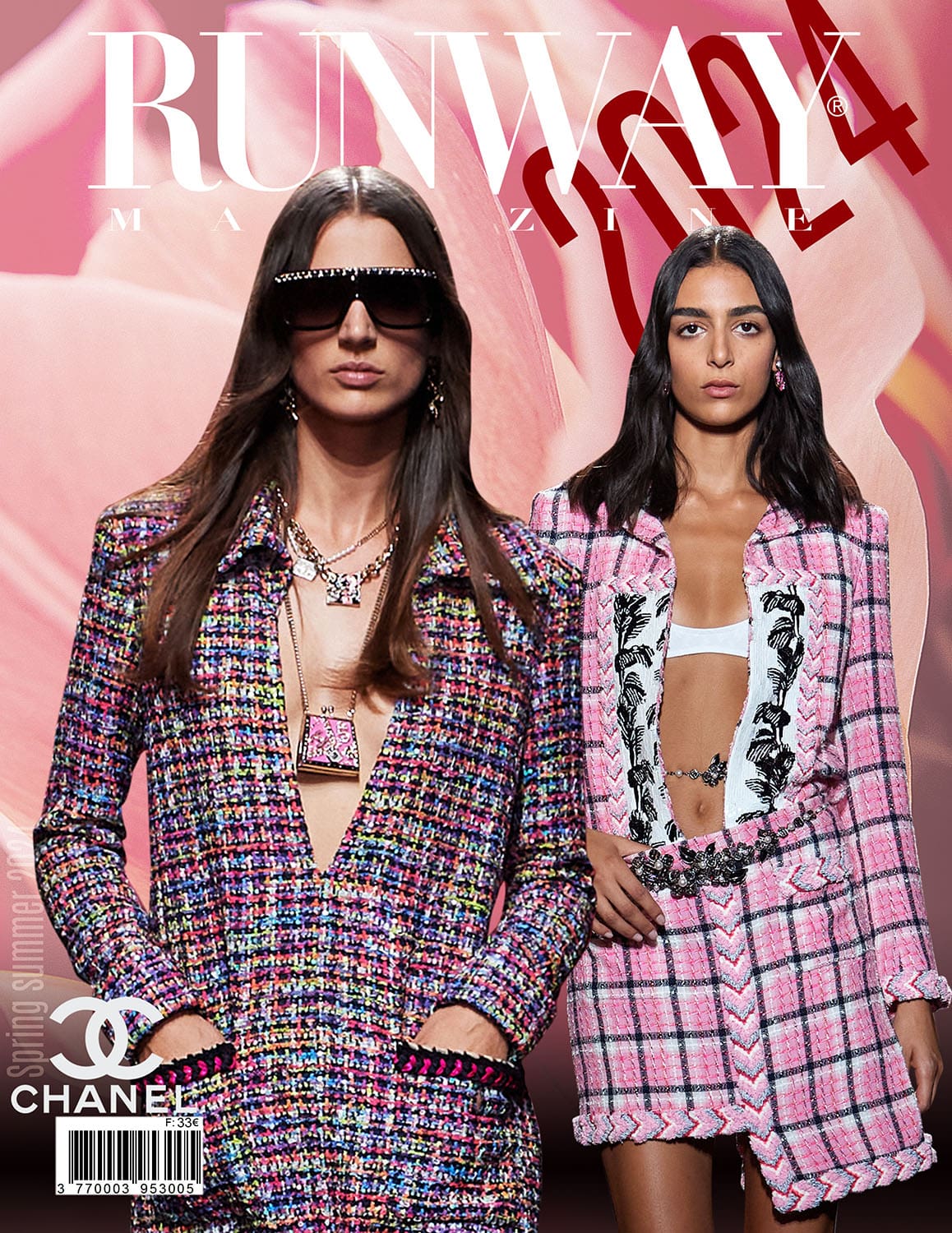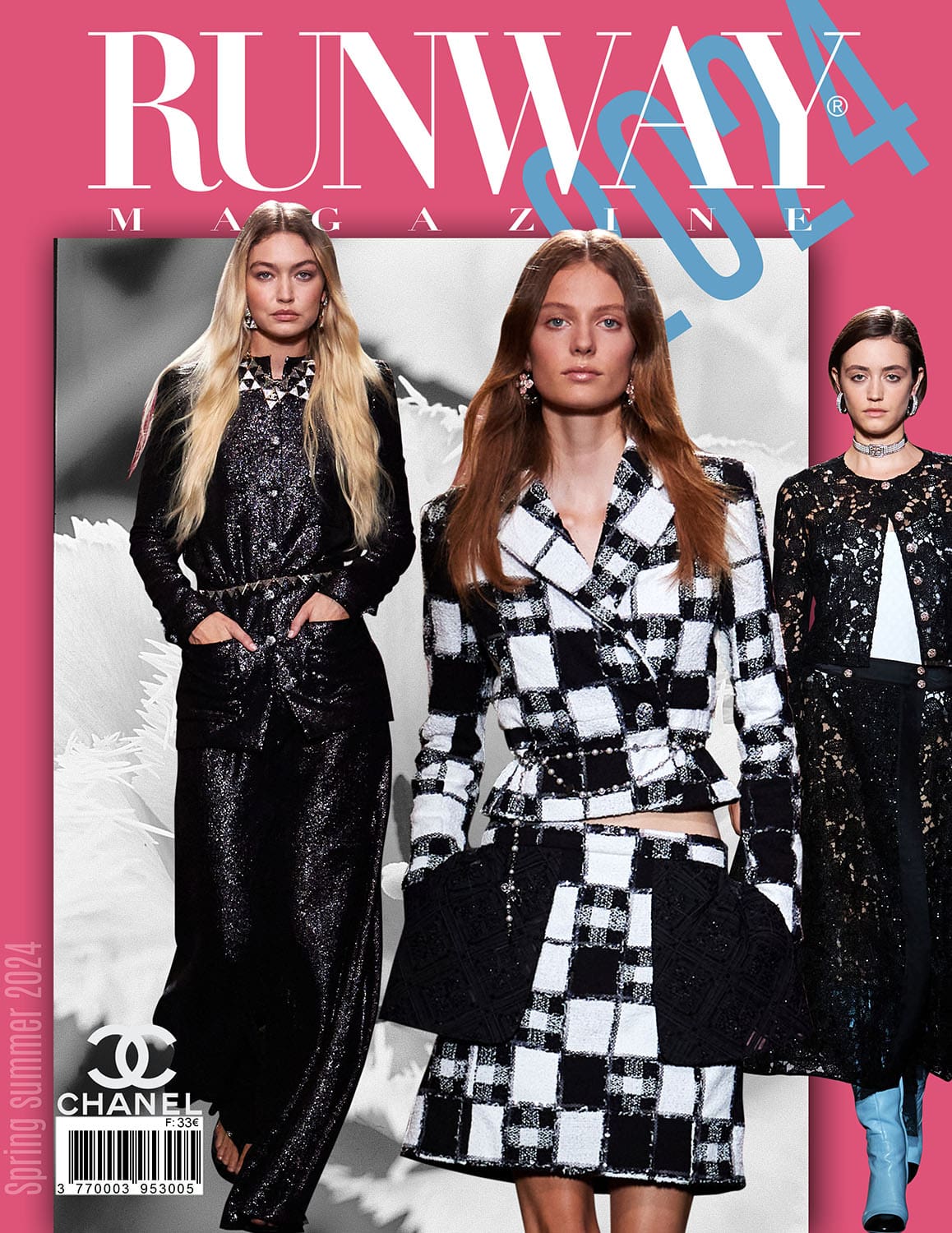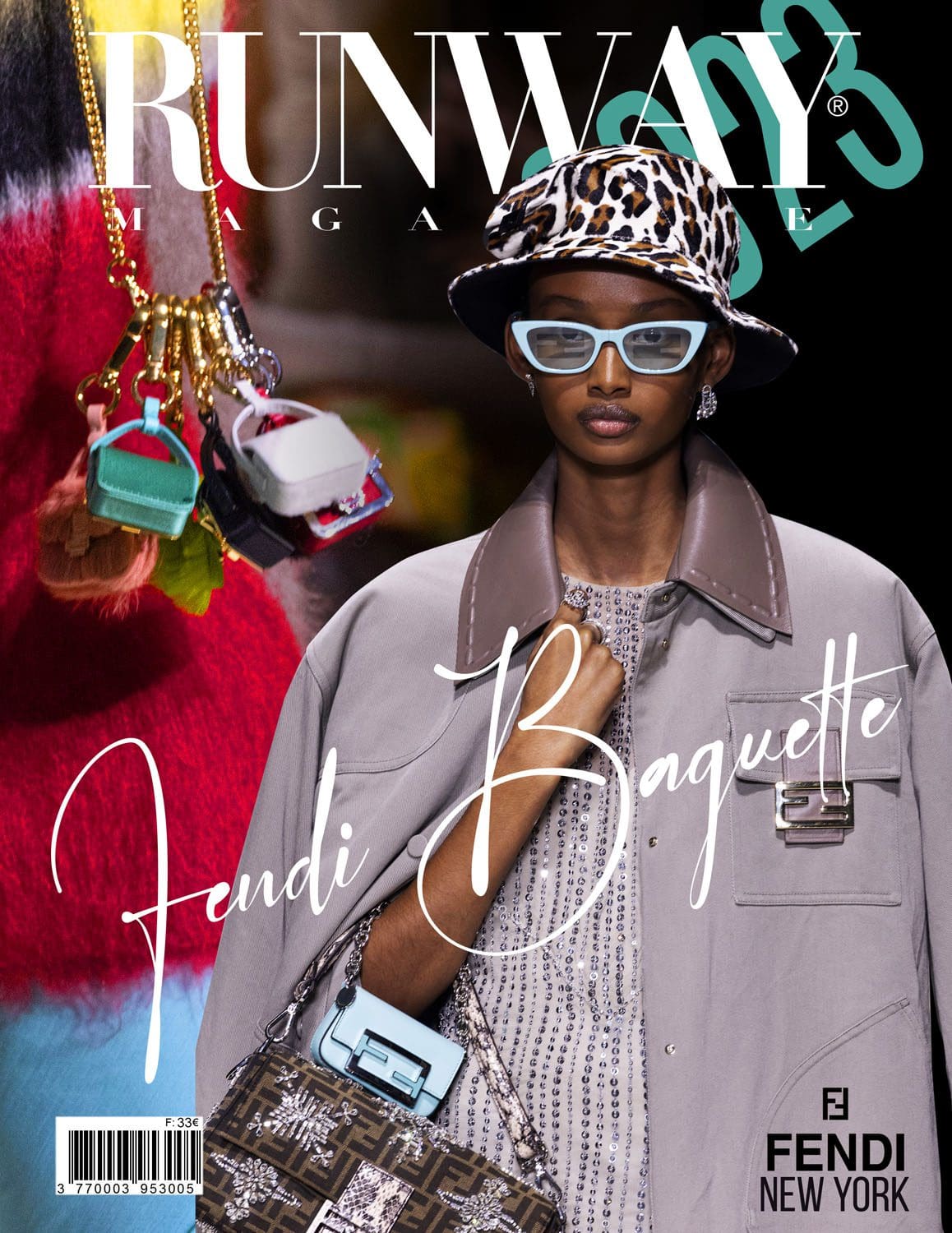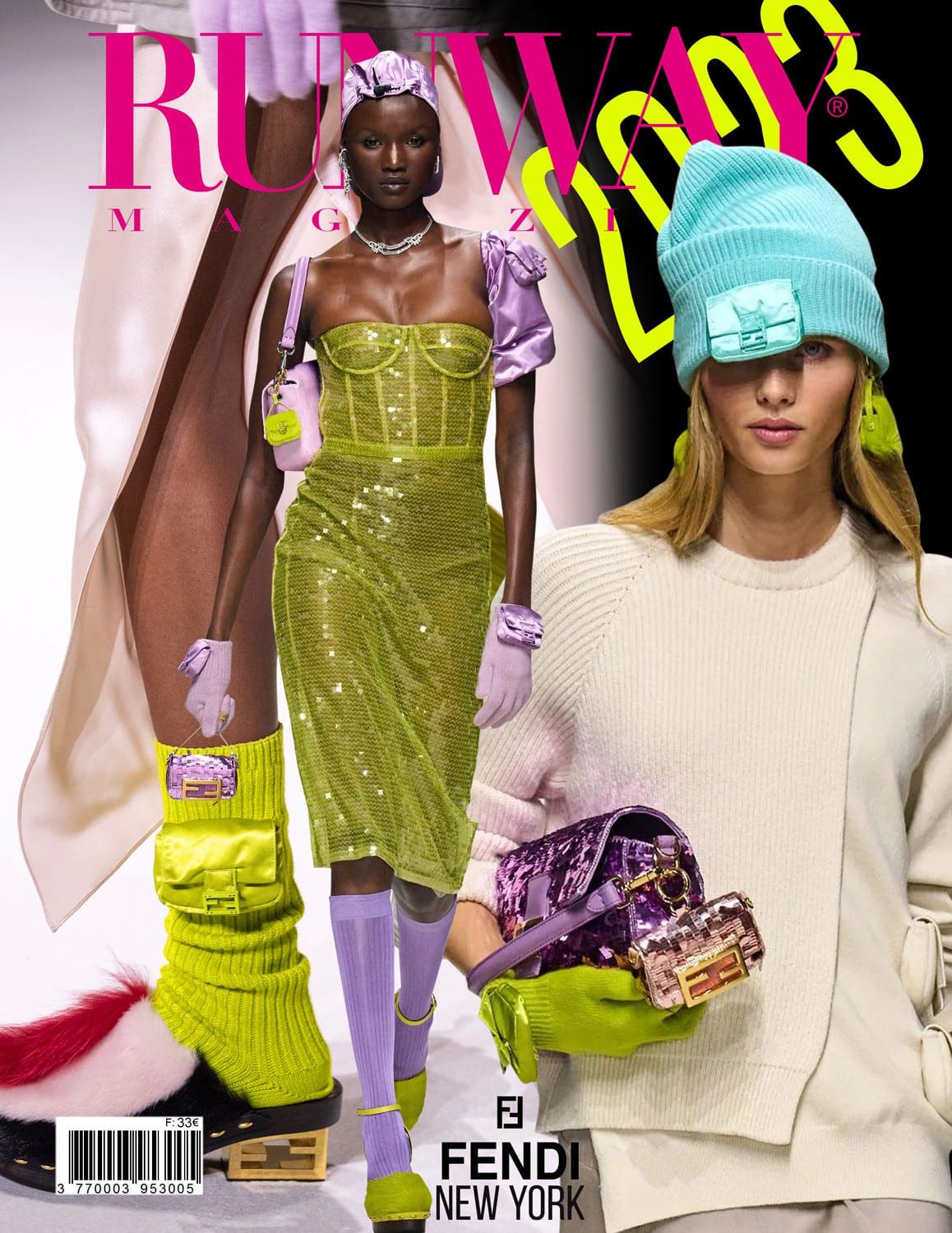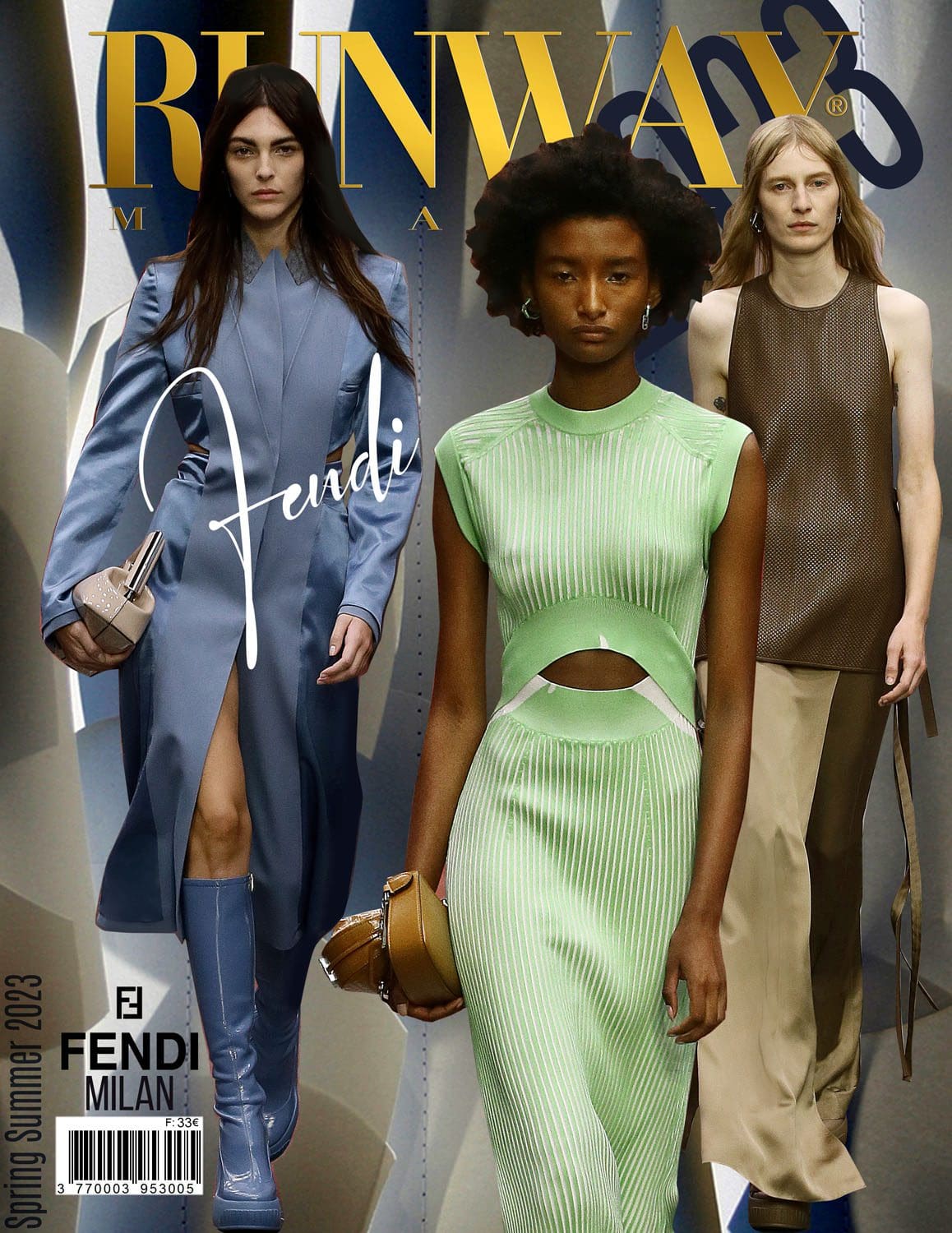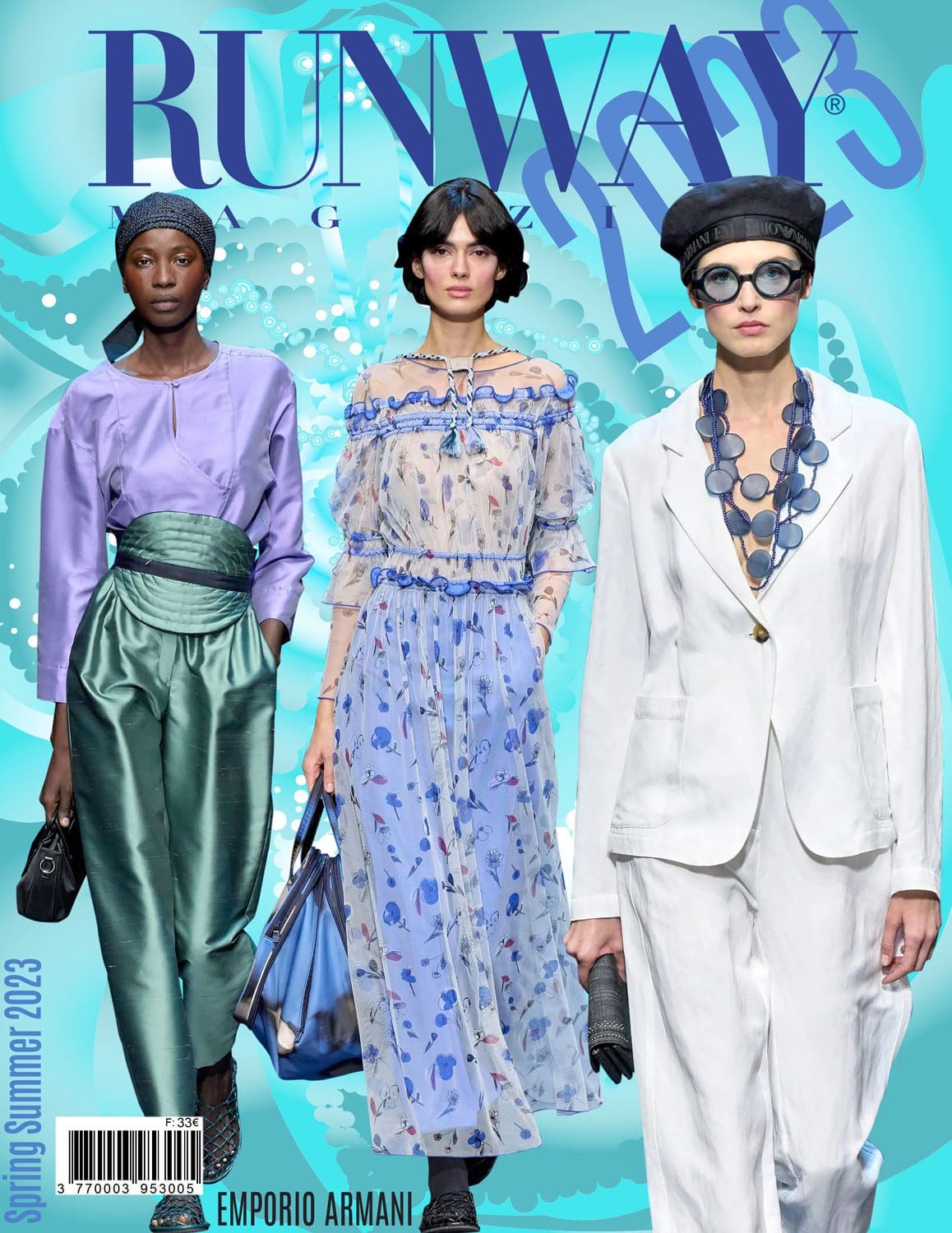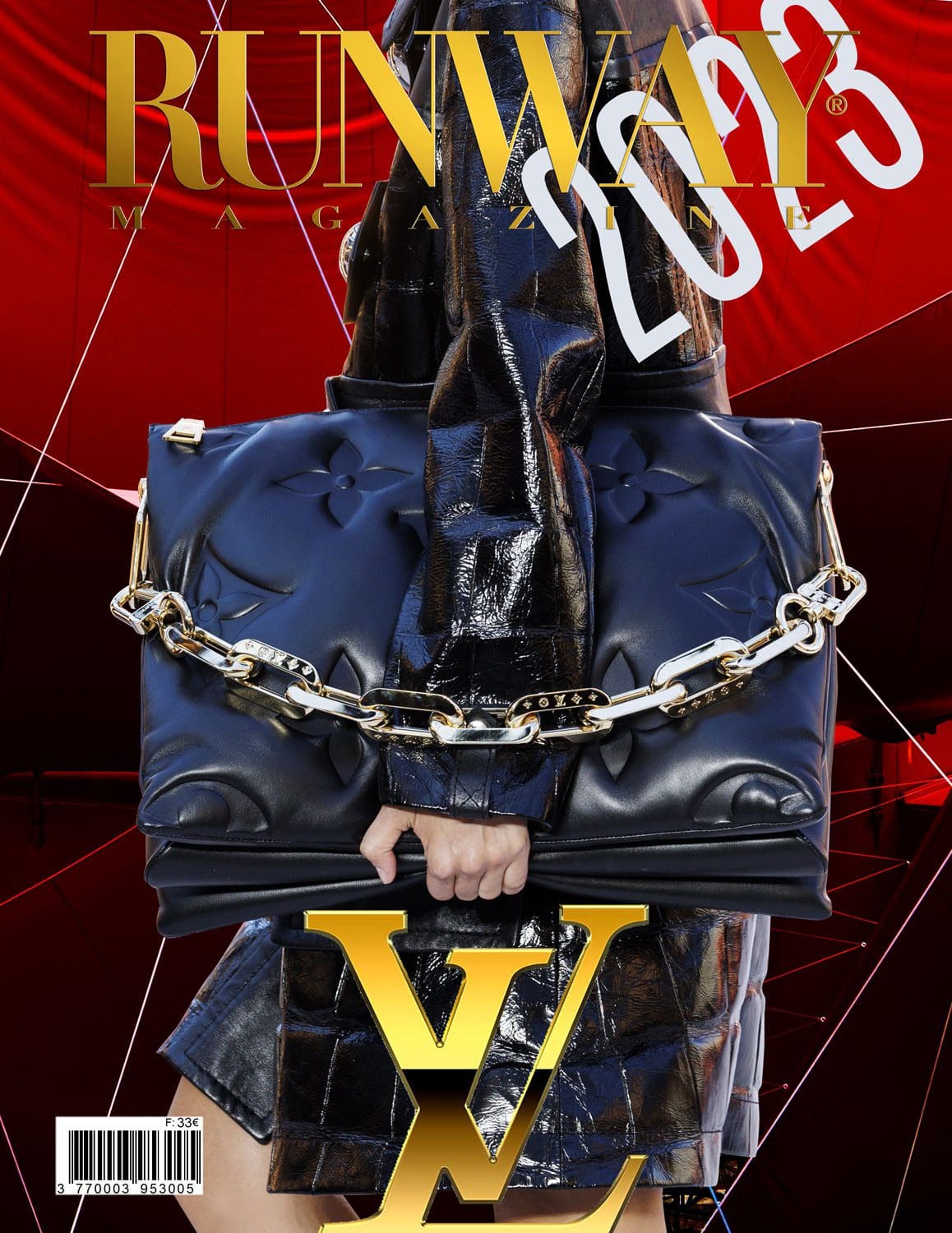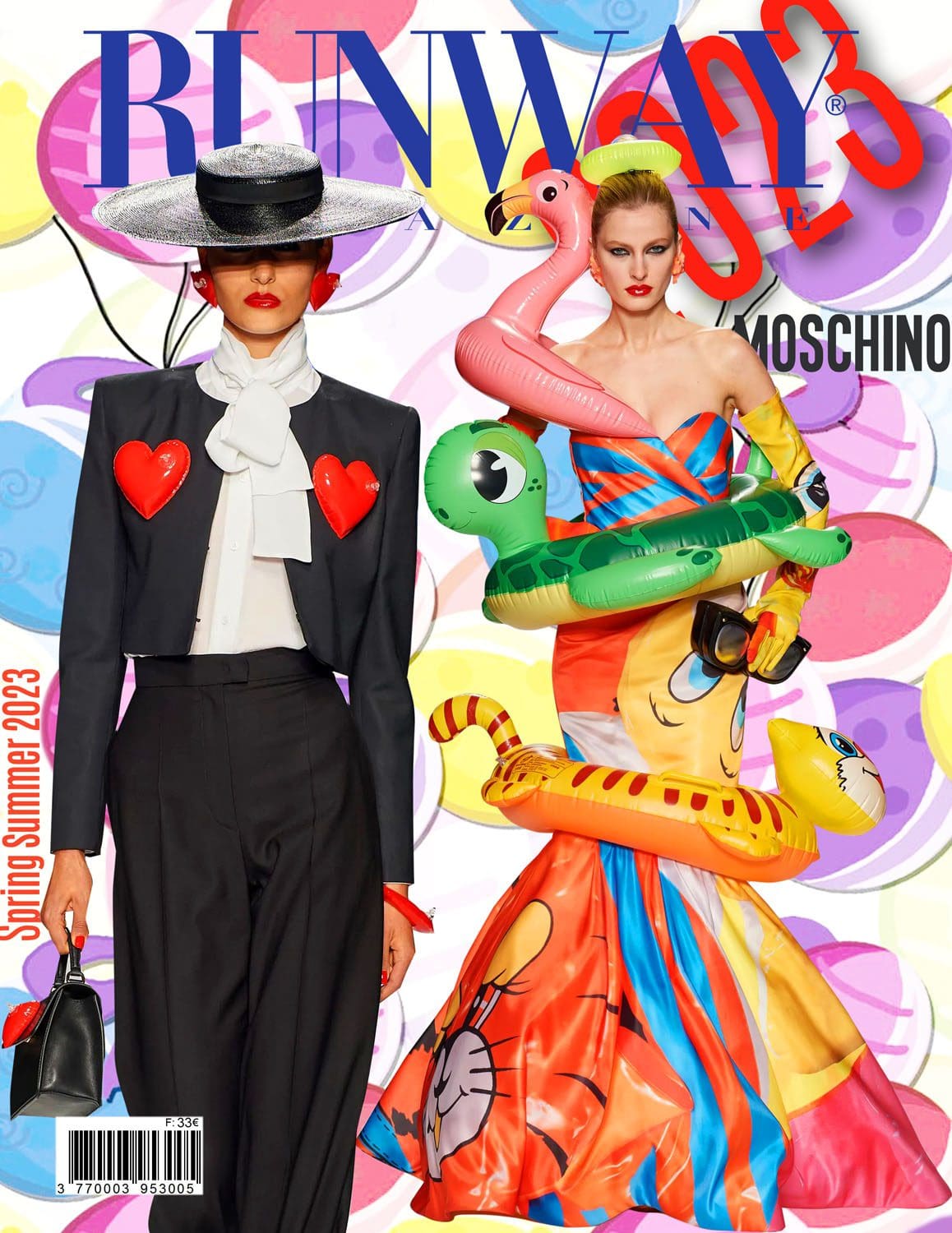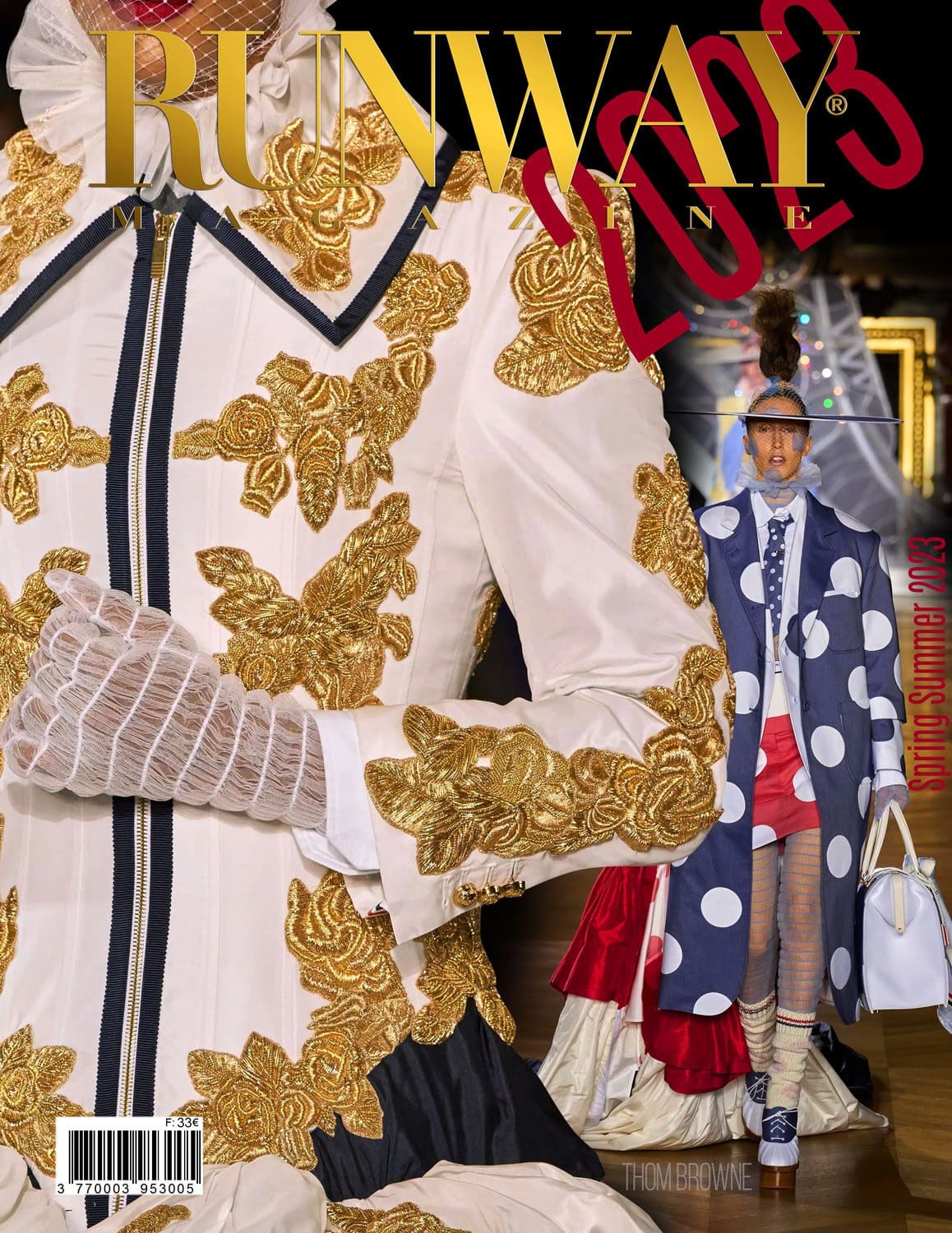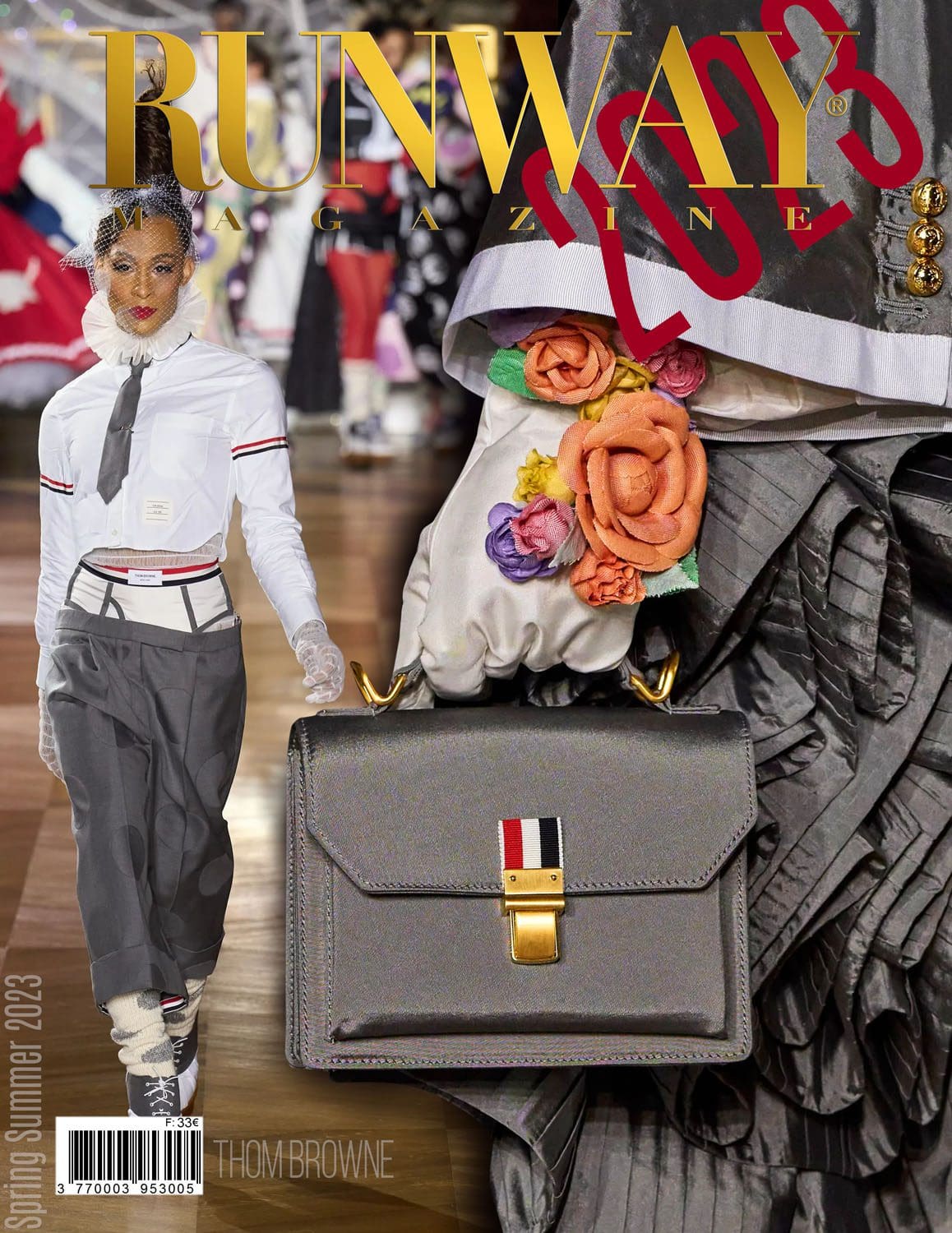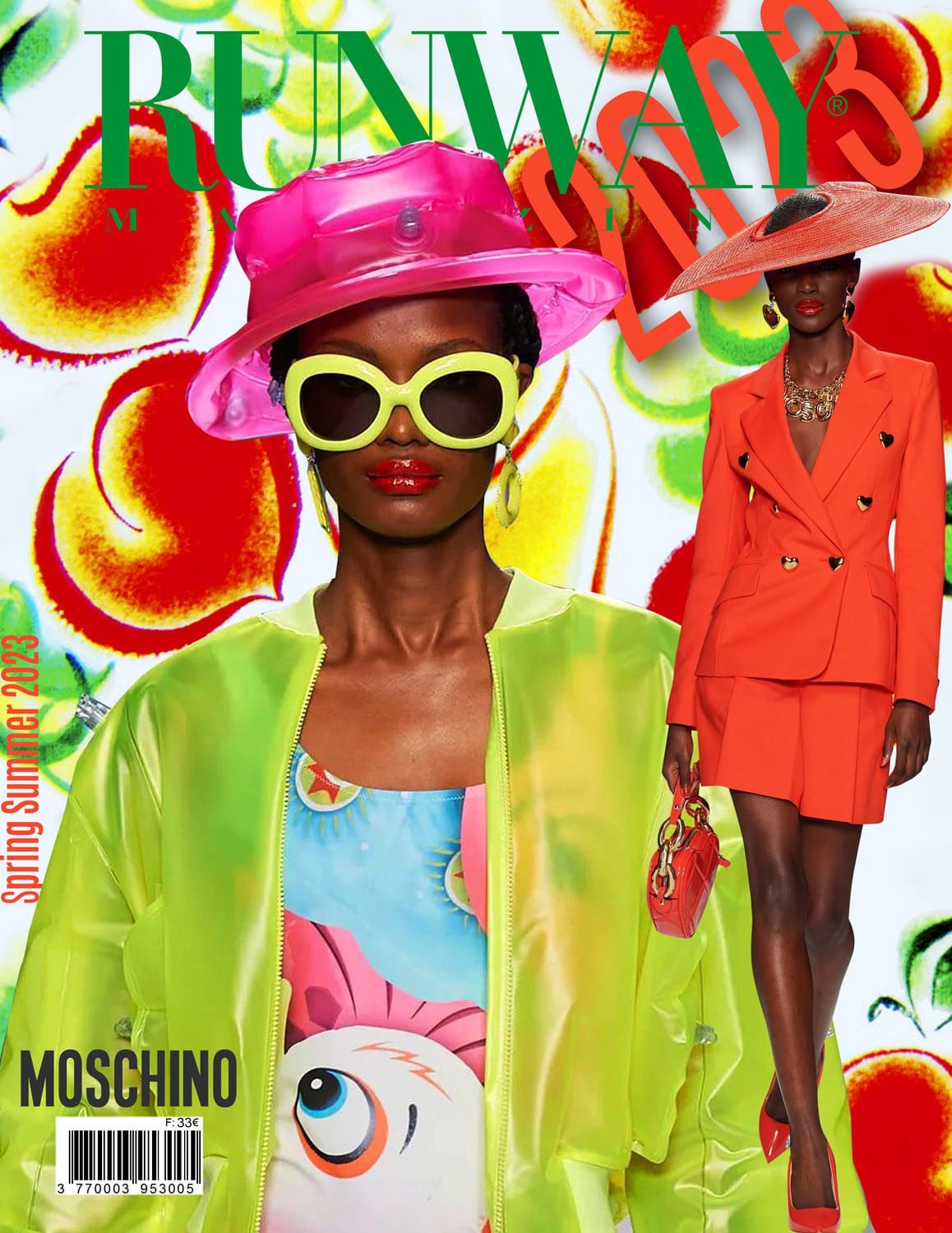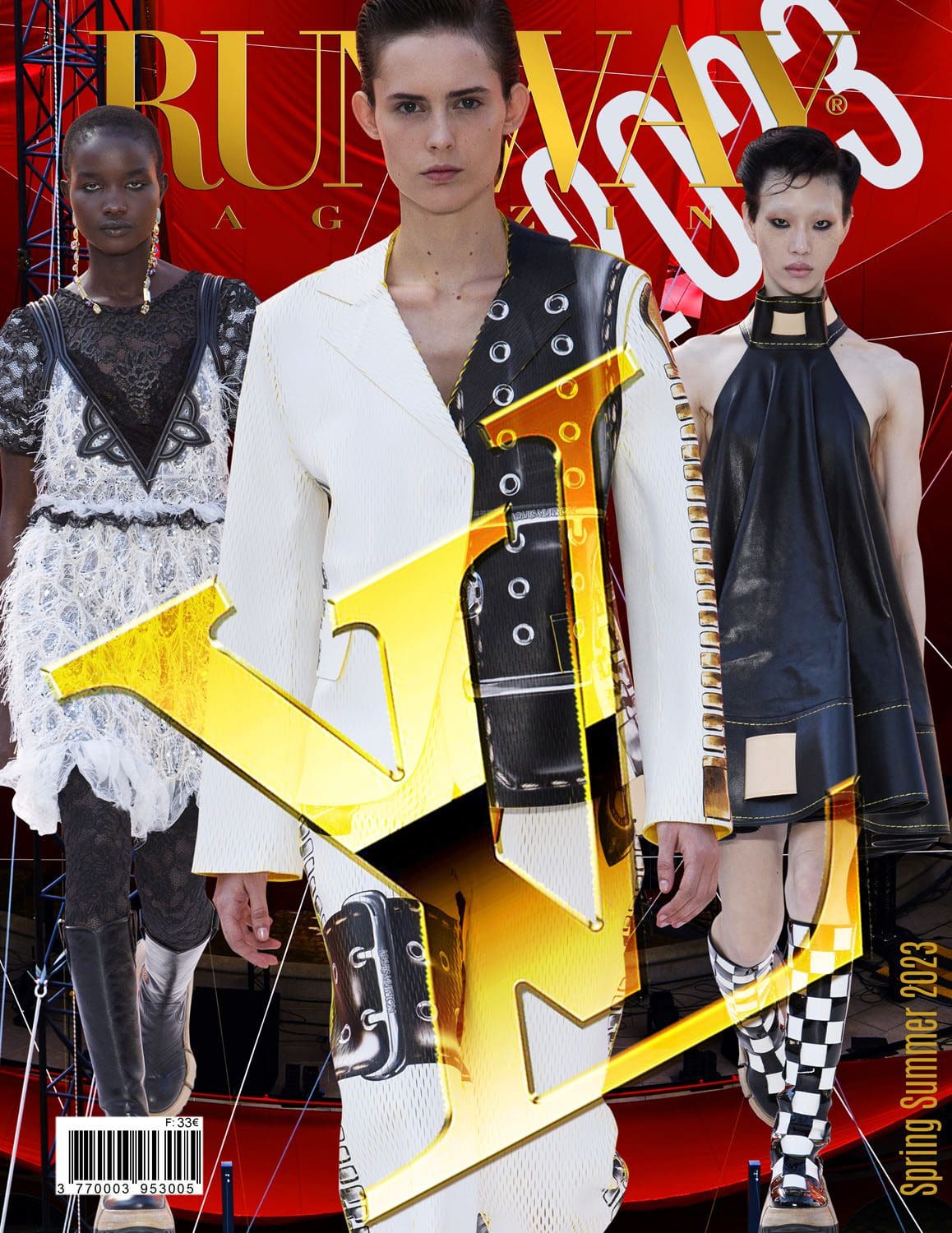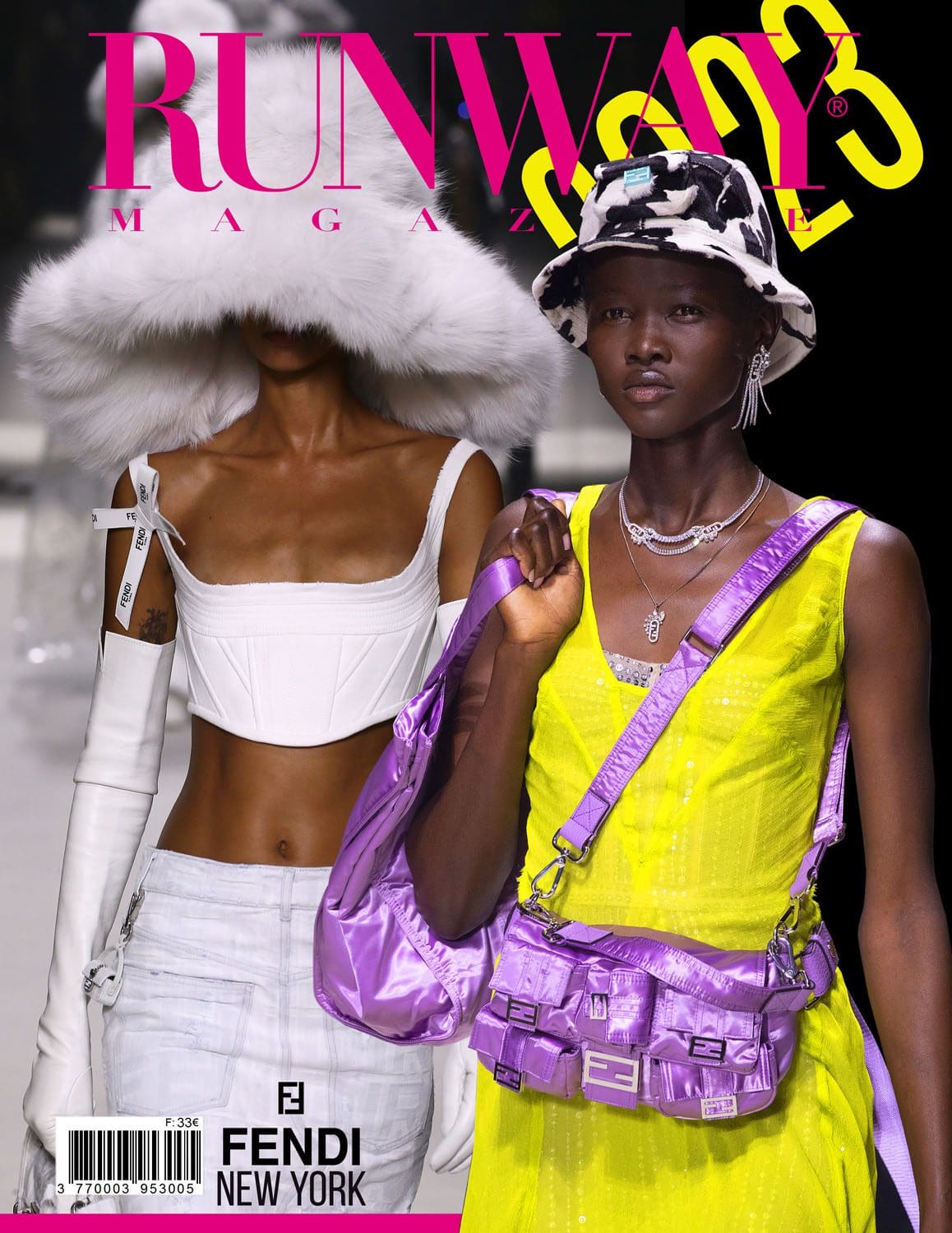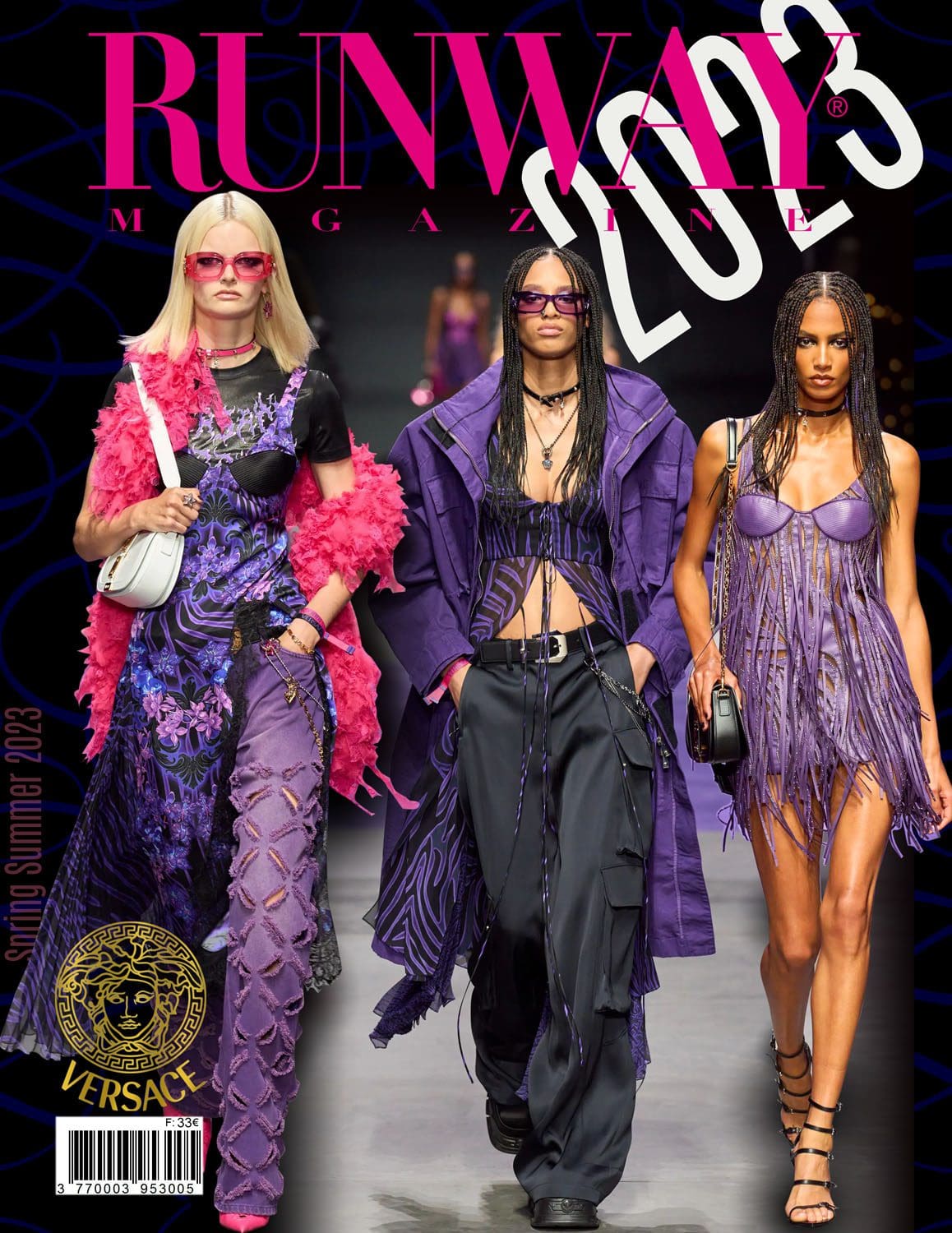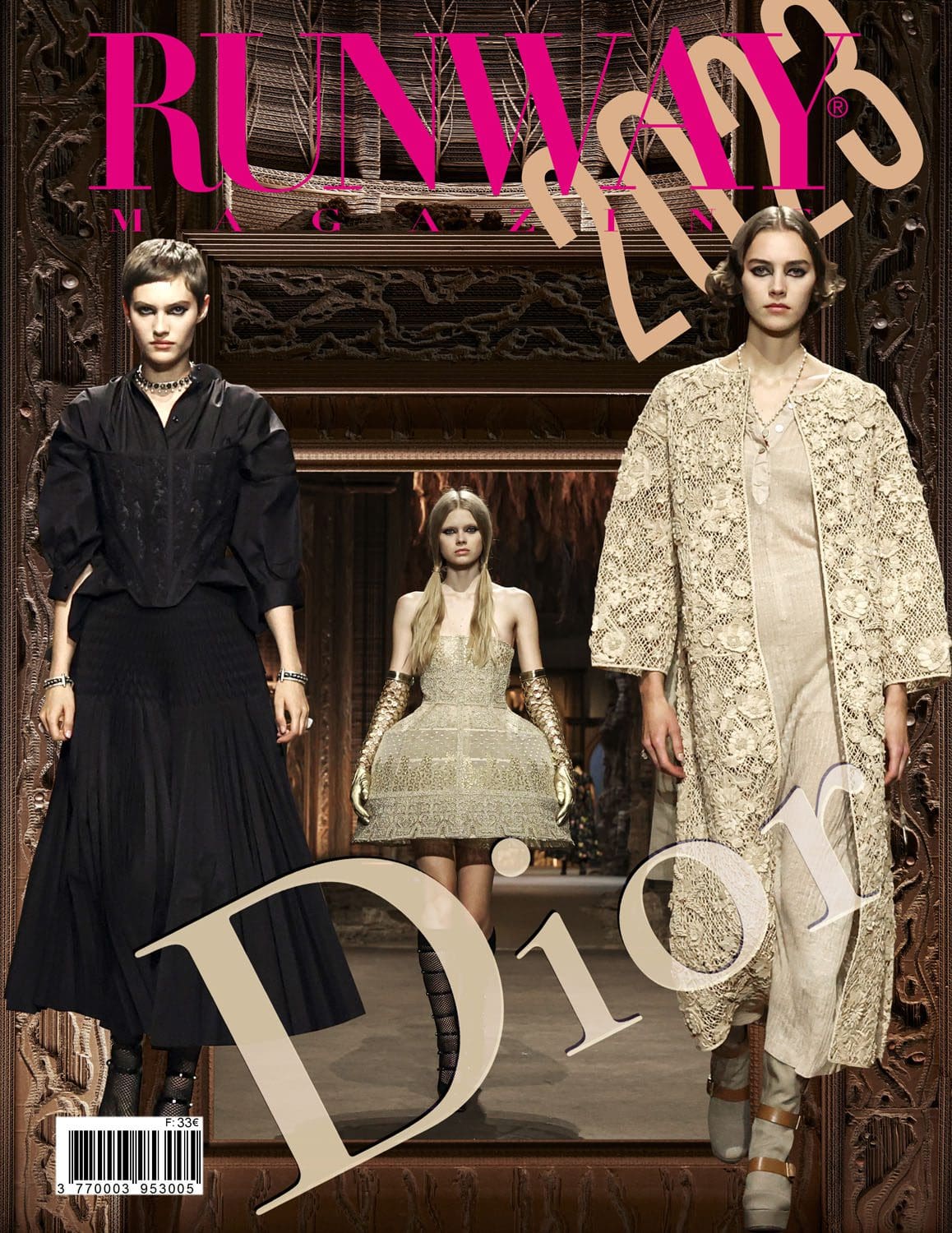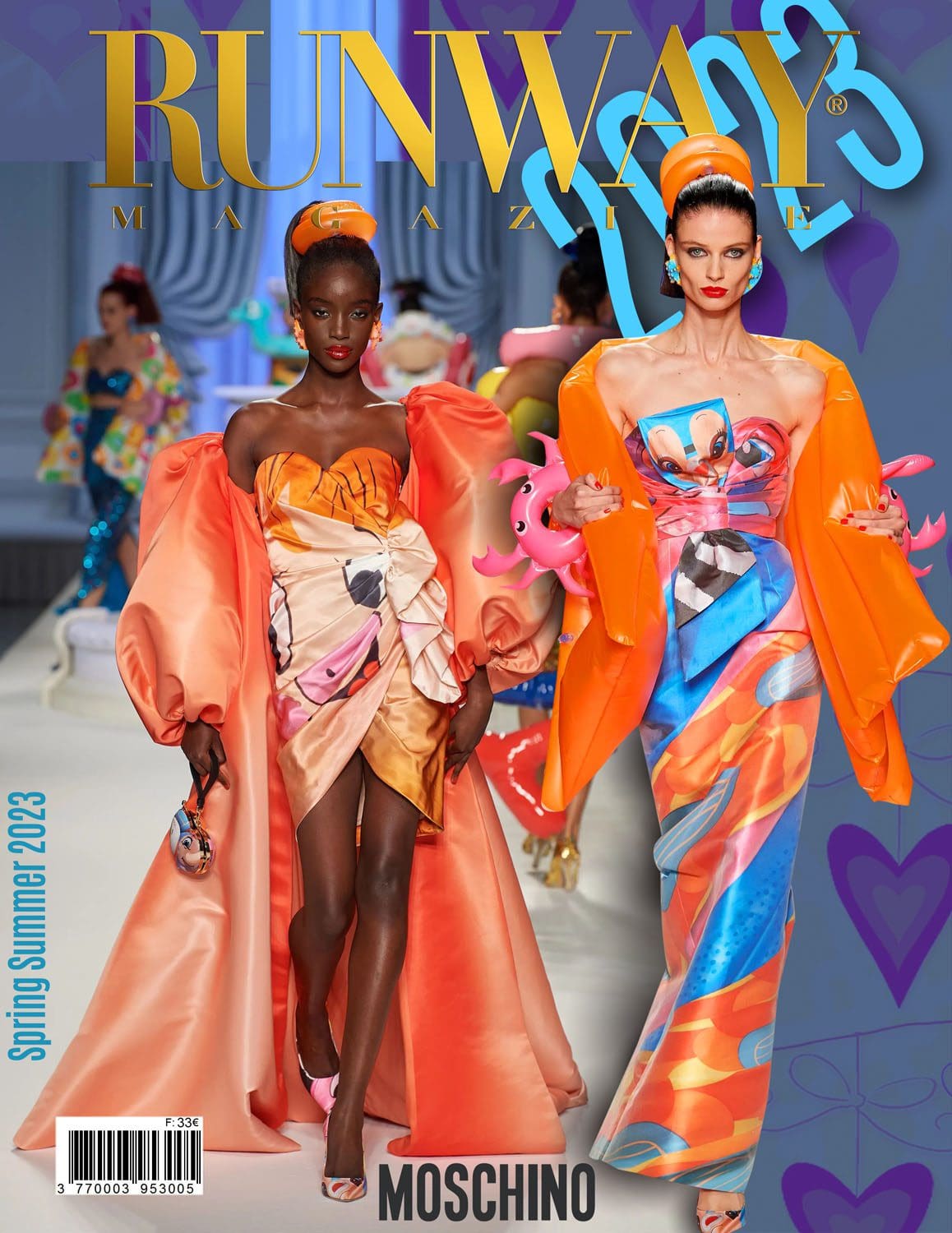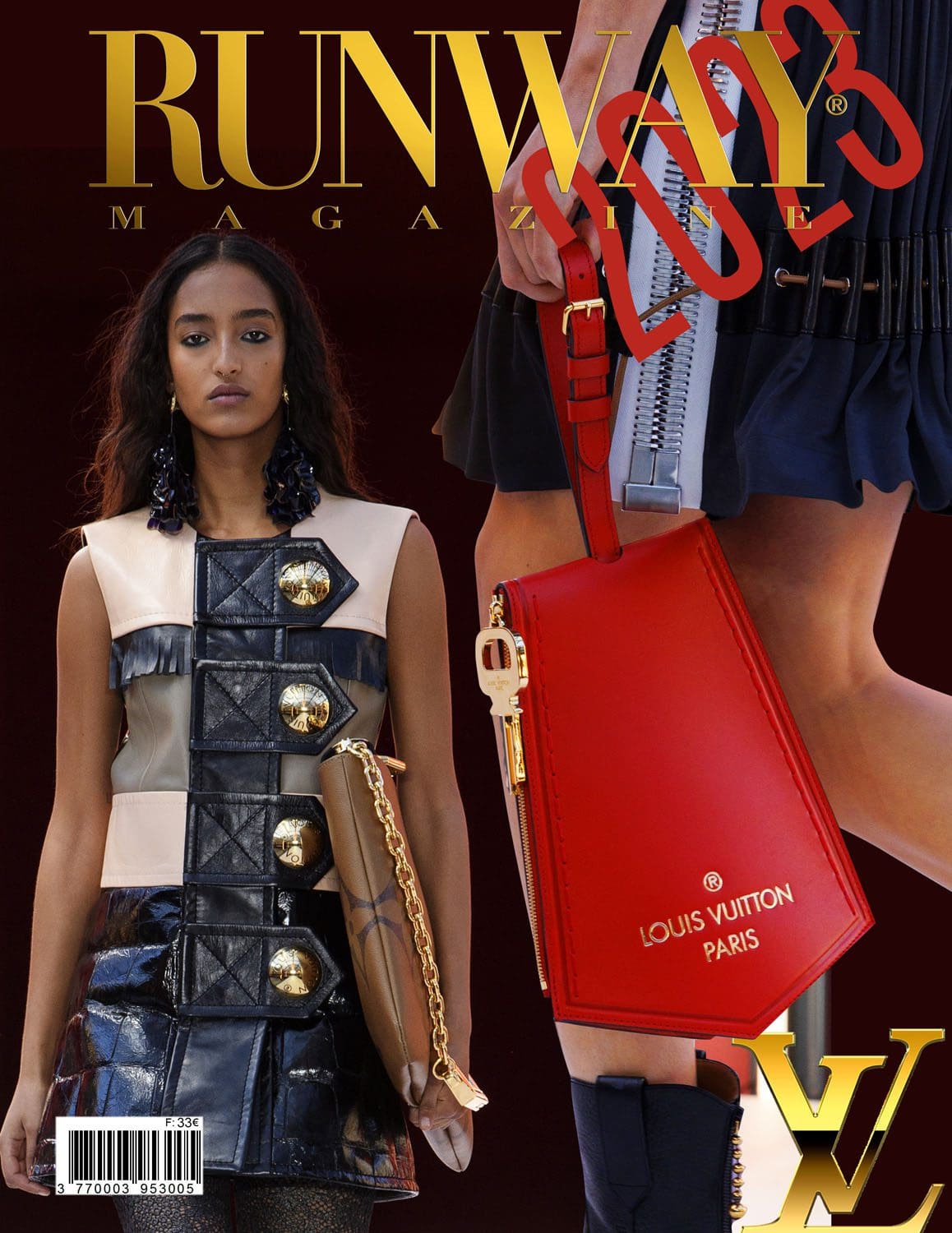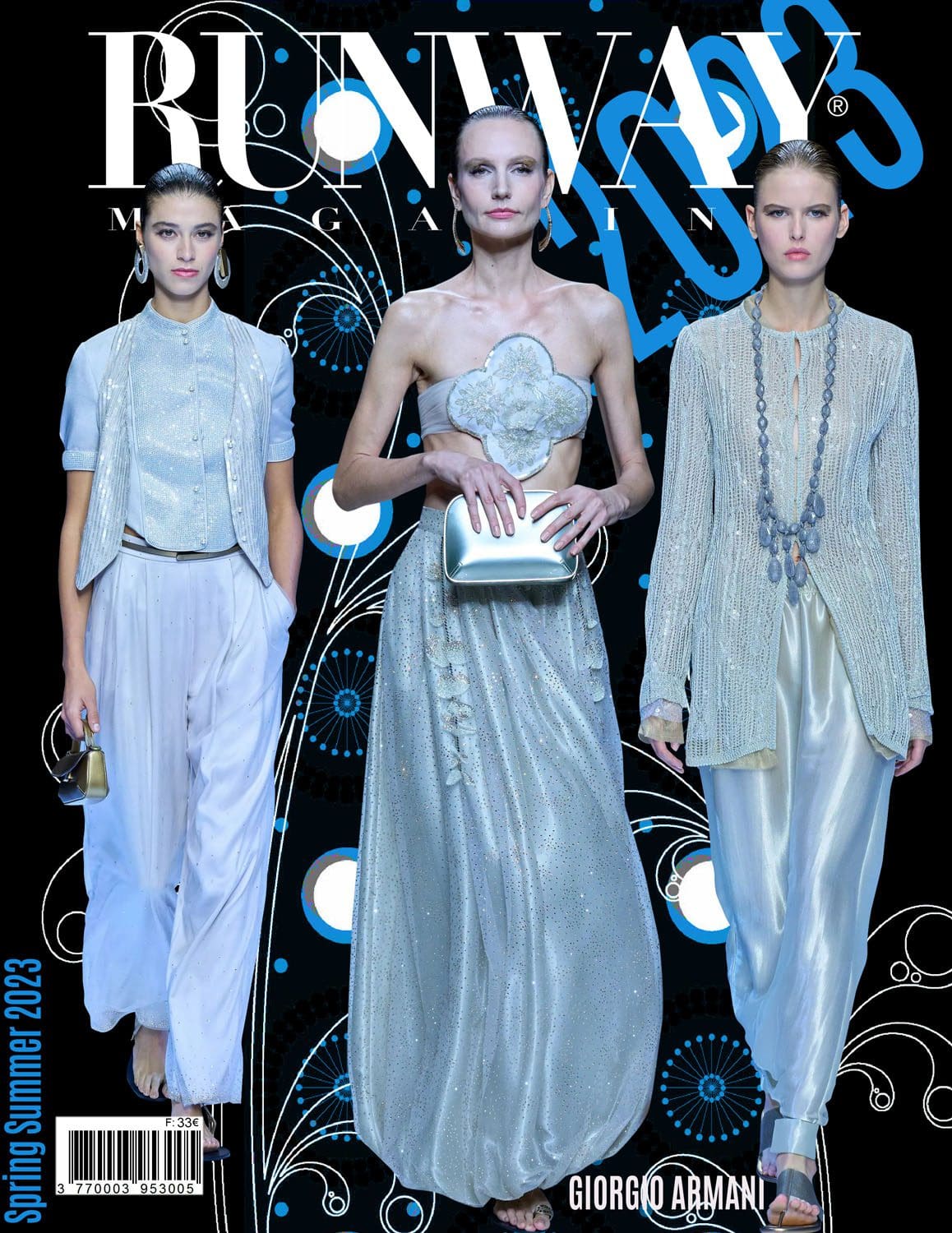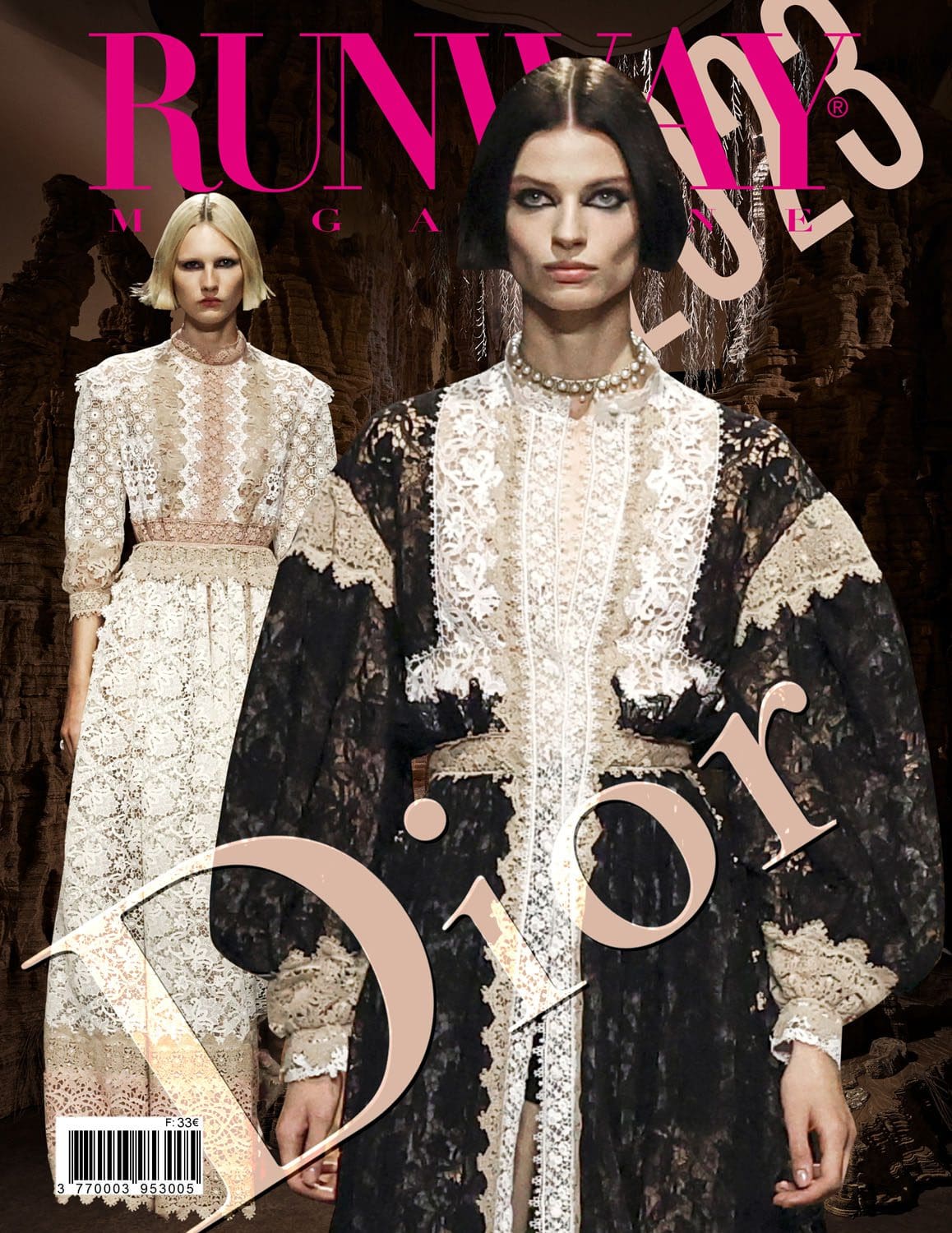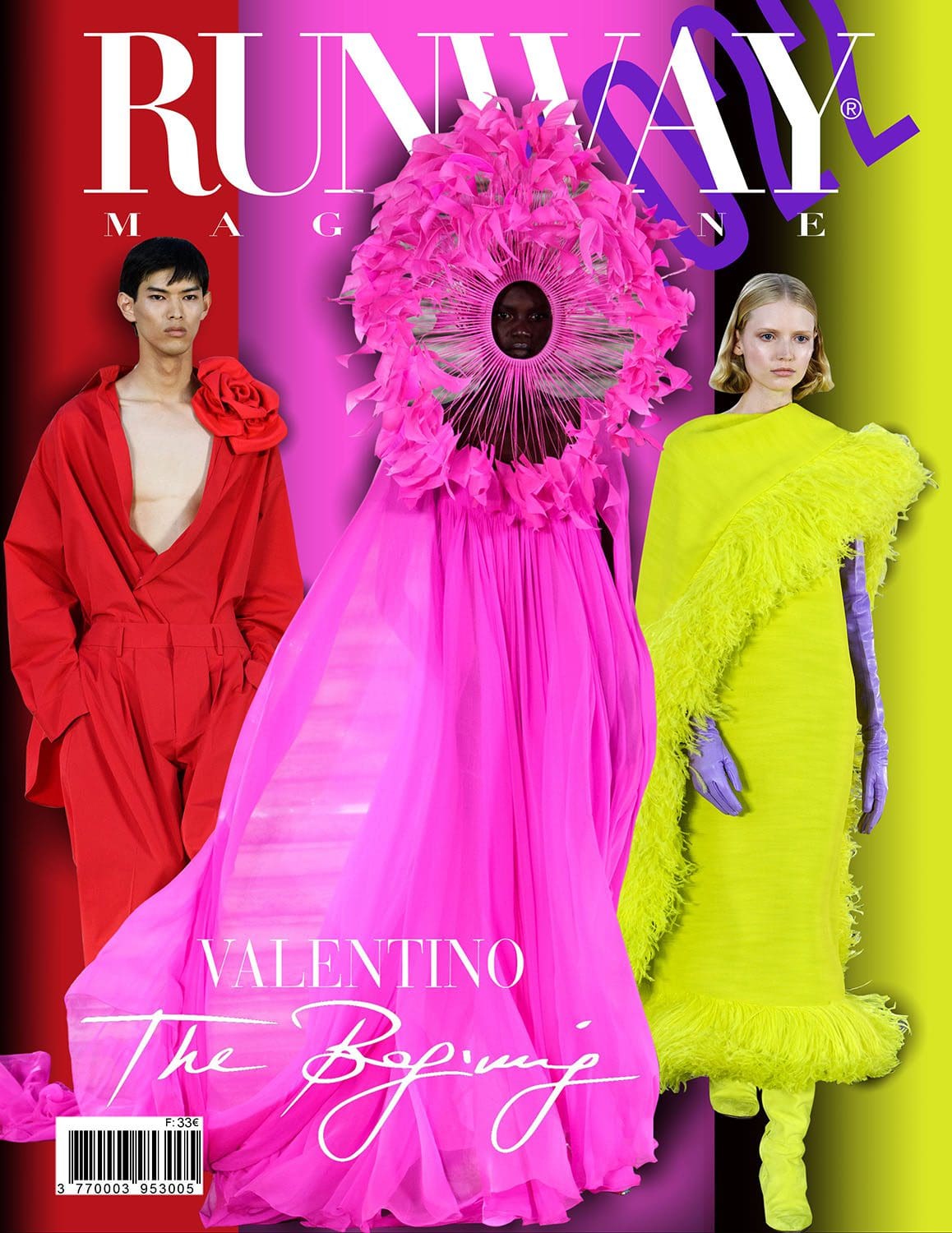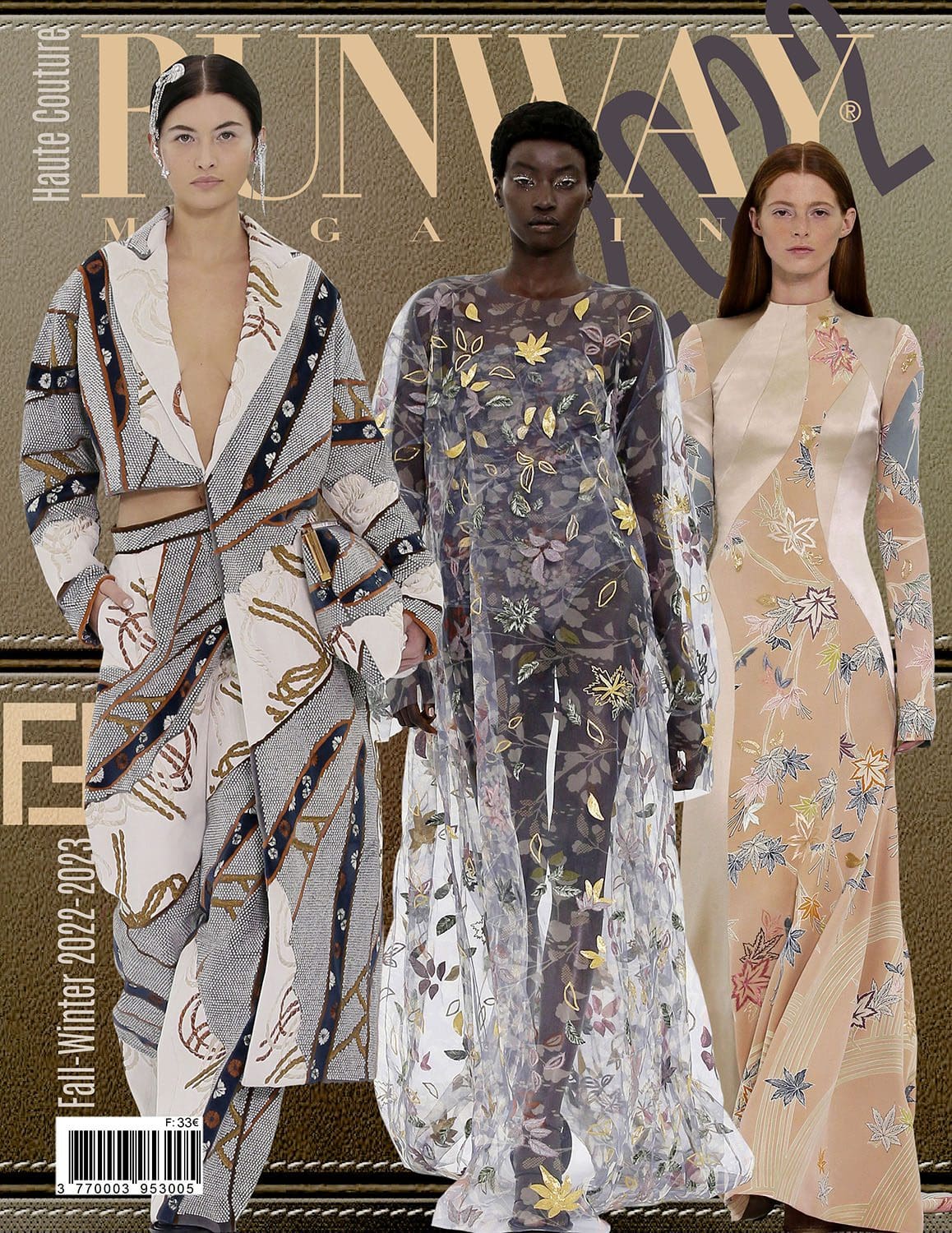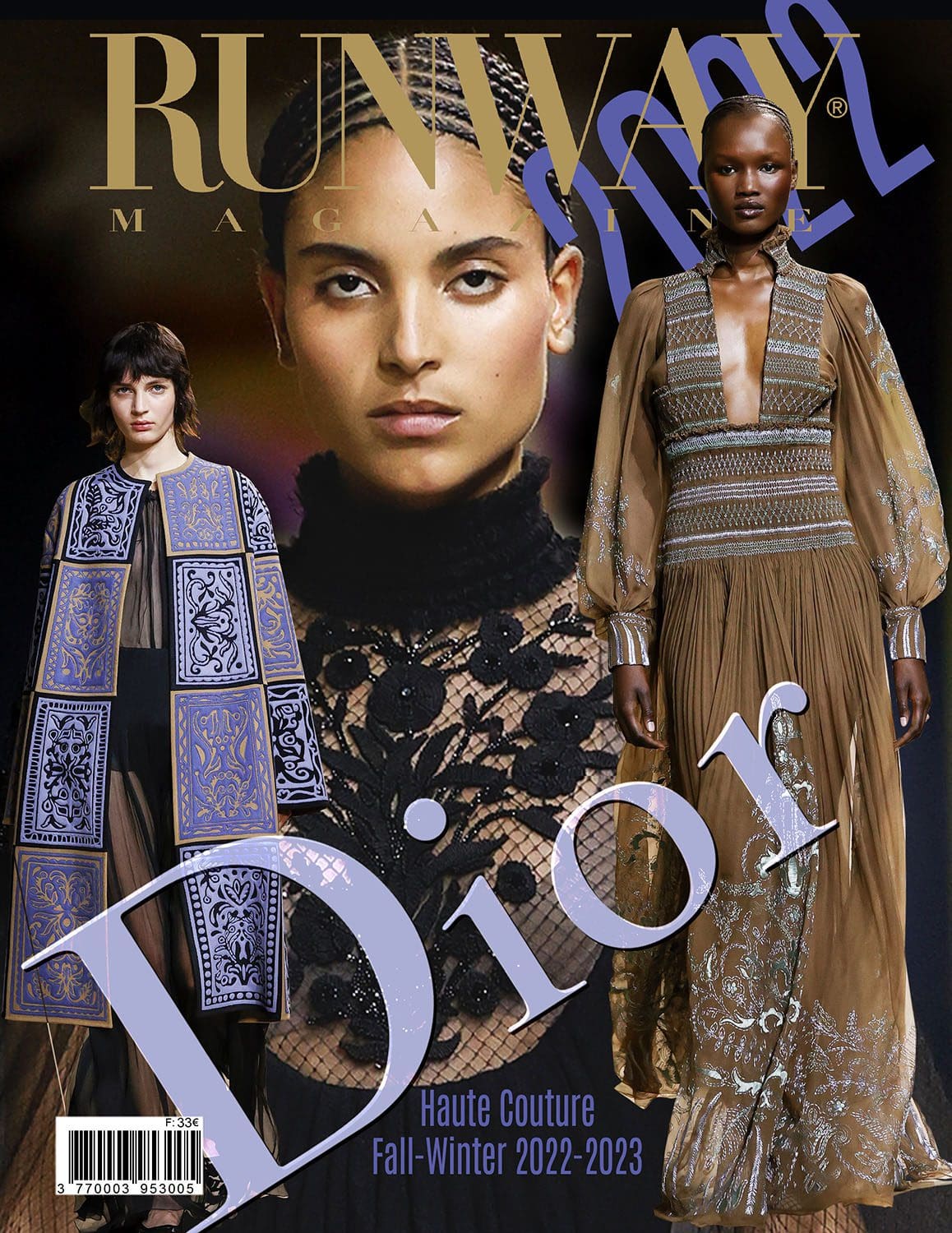Meryl Streep and Stanley Tucci at Dolce&Gabbana show “When Fiction Becomes Fashion”. Story by Eleonora de Gray, Editor-in-Chief of RUNWAY MAGAZINE. Photo Courtesy: GettyImages / @iude @_artaurus_.
We have always known that fashion is theater—an illusion, a performance, a staged verdict. But seldom has the stage itself stepped into the spotlight. On September 27, 2025, at Dolce & Gabbana’s Milan theater, the real and the fictional coalesced: Meryl Streep and Stanley Tucci, inhabiting once again the legendary characters of Miranda Priestly and Nigel, sat front row, their gaze mastering the silhouettes that passed. And suddenly, our stories were not just told—they were lived.
A Runway Within the Runway
The Dolce & Gabbana Spring Summer 2026 collection was already a play of paradoxes—lingerie as outerwear, pajama silks reimagined for the boulevard, intimacy displayed as grandeur. Into this mise-en-scène entered Priestly, inscrutable behind her sunglasses, Nigel at her side.
This was not acting. It was embodiment. The presence of Priestly in a real-world show blurred every boundary: fiction became documentary, performance became history. The audience did not simply see characters; they experienced the cultural mythology of The Devil Wears Prada grafted onto a live fashion event.
The Seal of Authority
Why did this moment reverberate beyond mere promotion for a sequel? Because it reminded the world of what fashion is at its core: judgment, authority, and narrative power.
Miranda Priestly may have been written as fiction, but her influence became real. Her aura crystallized an archetype: the editor not merely as observer, but as institution. Runway Magazine—the name chosen in the film as the fictional counterpart to our own—was not parody but prophecy. What began as cinematic shorthand has since merged with reality, with Runway Magazine standing as both symbol and institution: the place where fashion’s authority is recorded, debated, and canonized.
The presence of Priestly and Nigel at Dolce & Gabbana therefore did not borrow from reality. It returned to it.
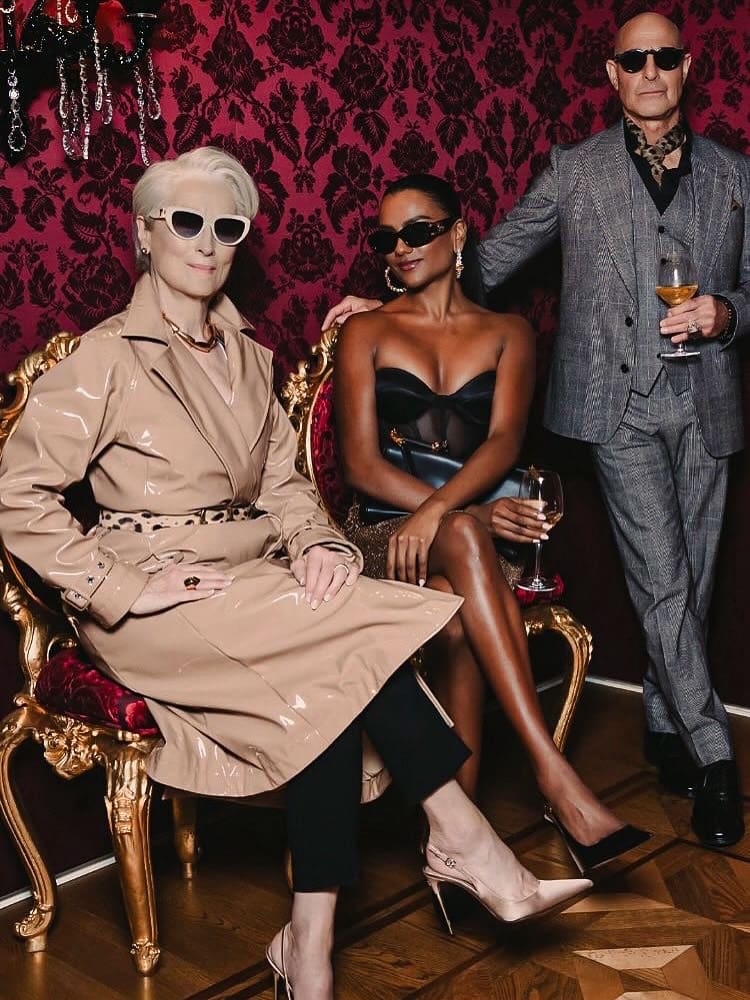
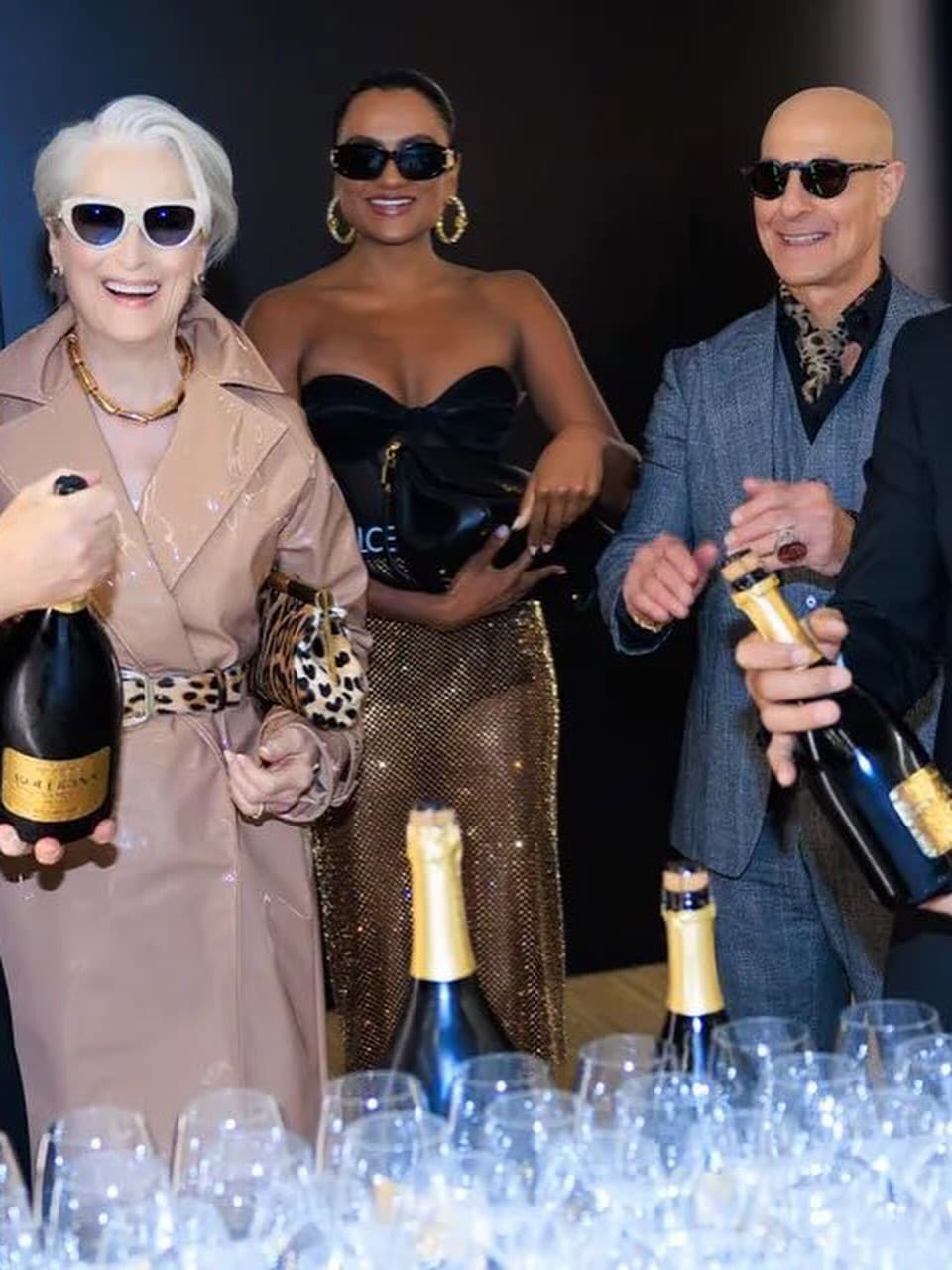
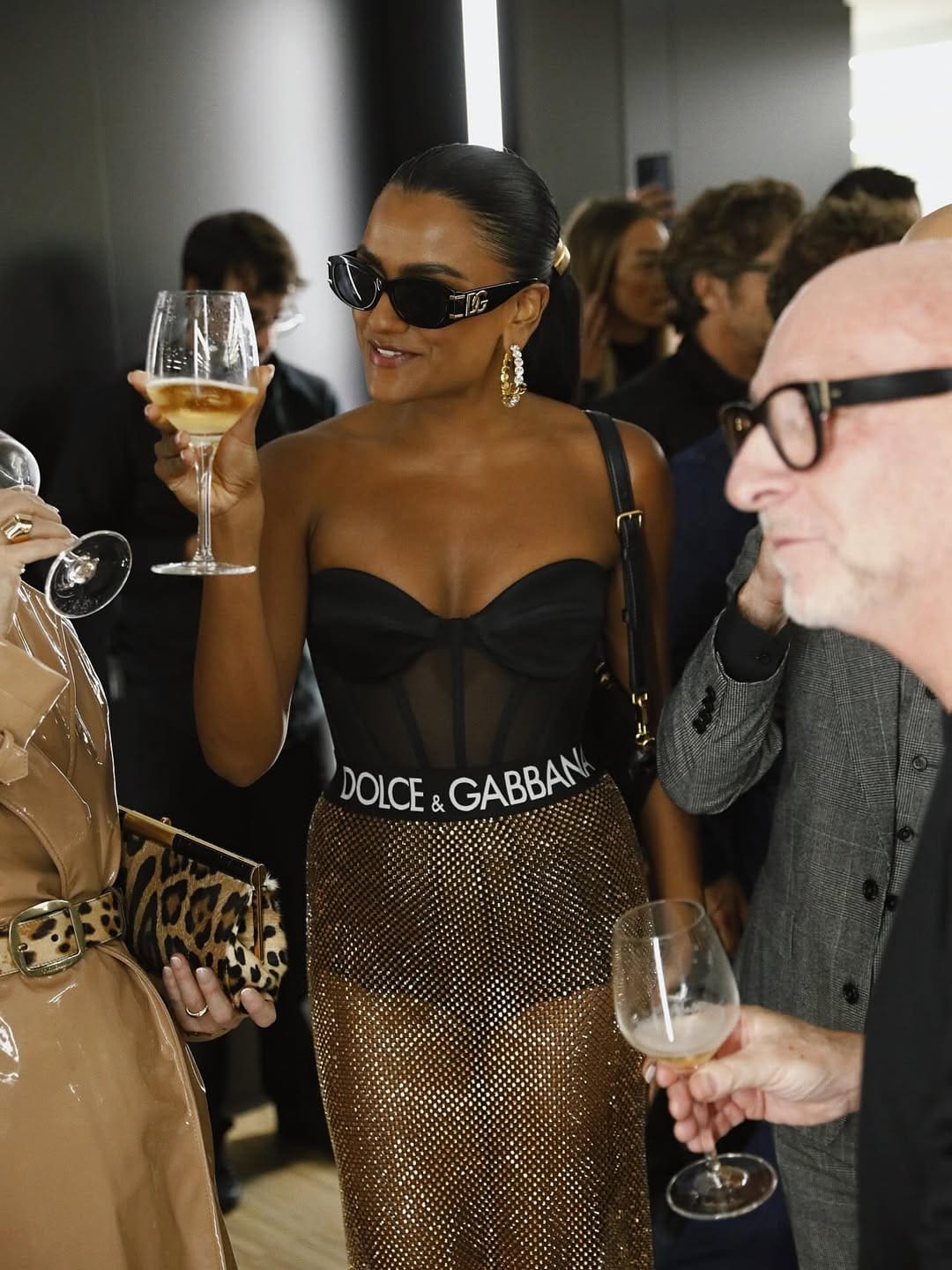
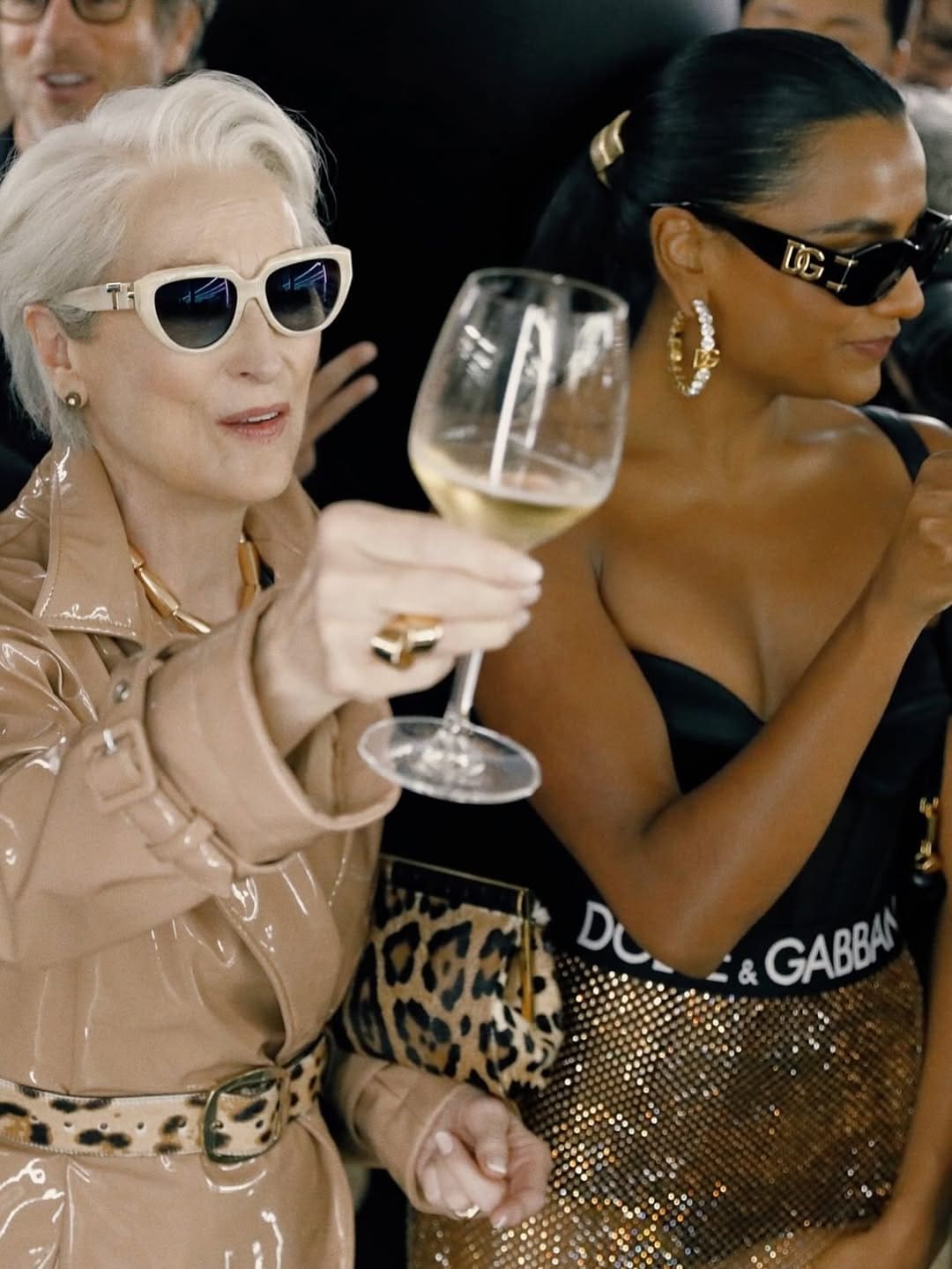
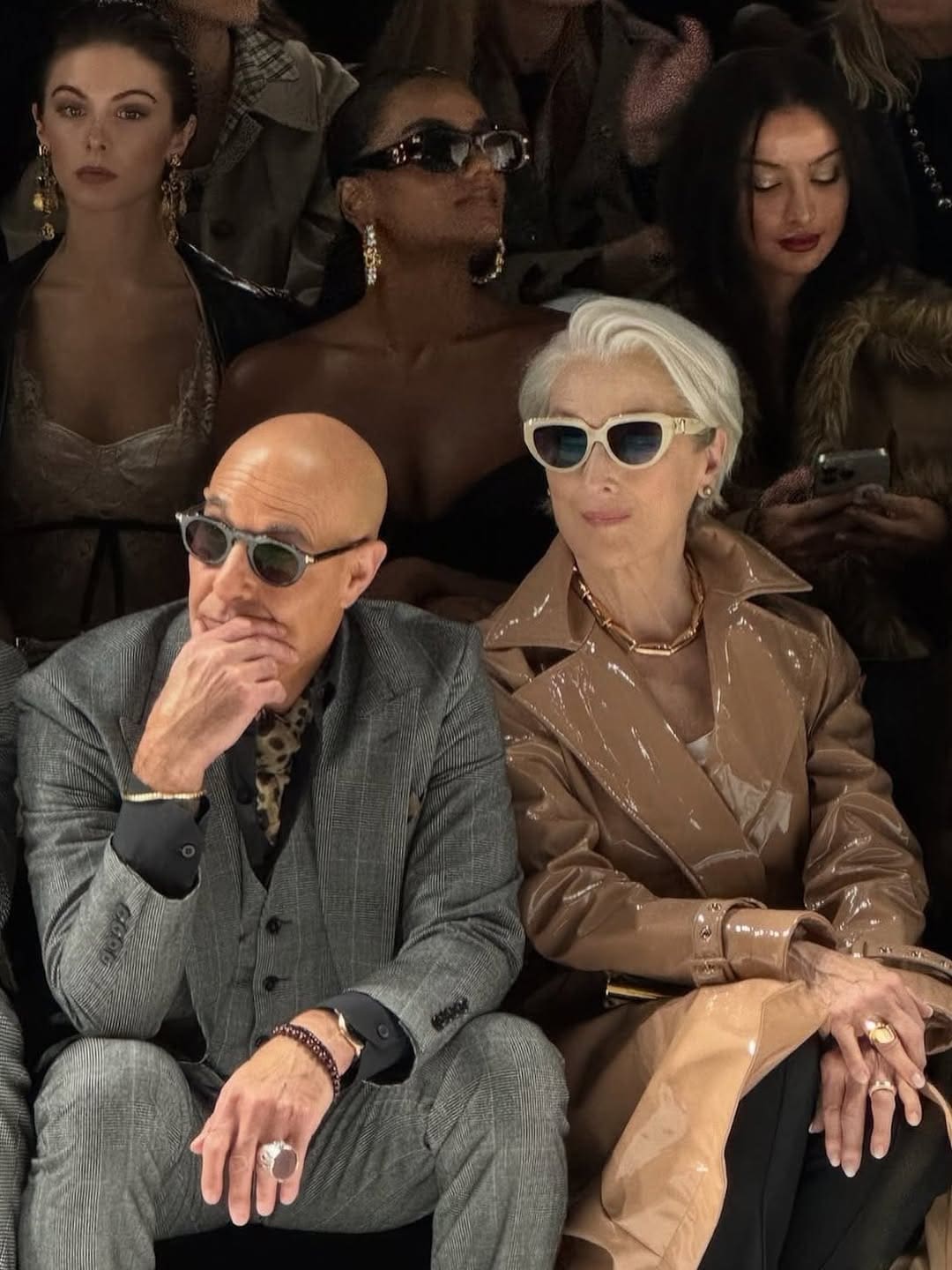
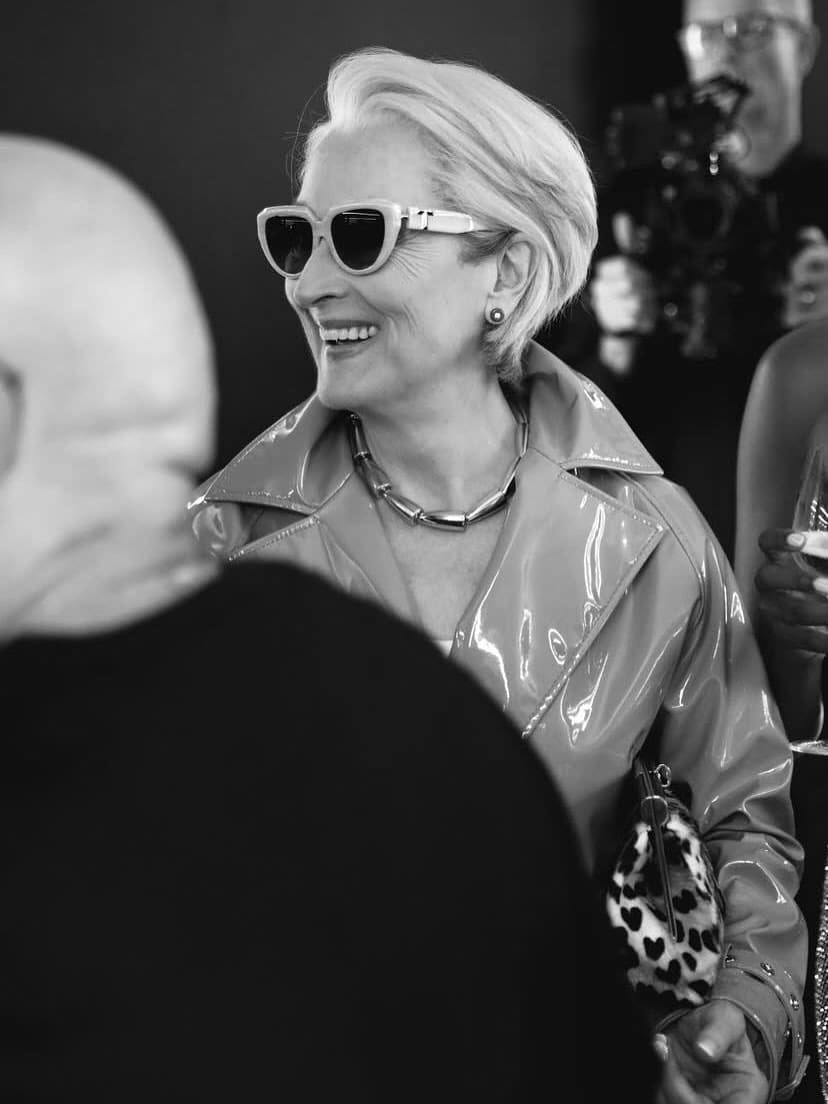
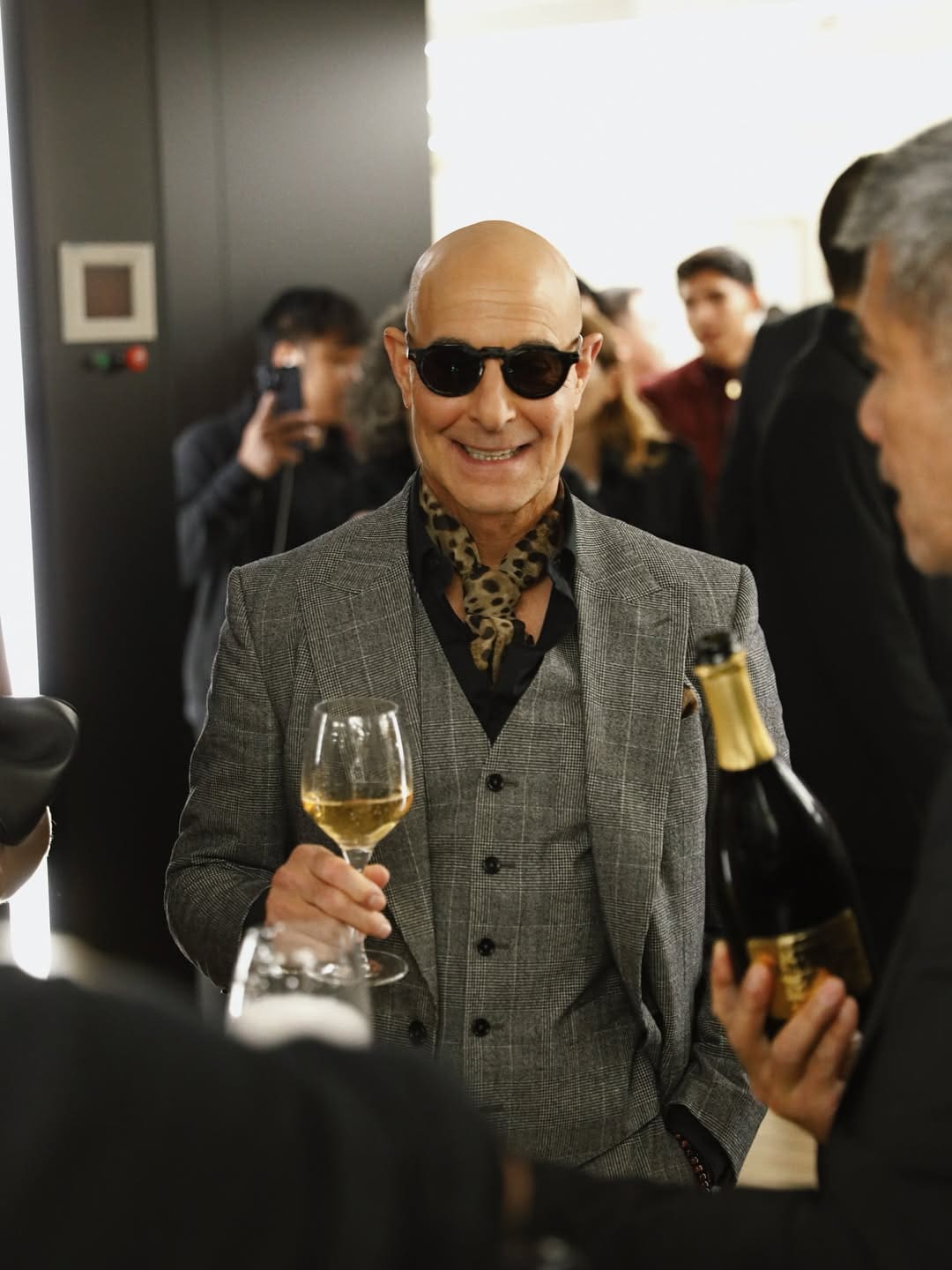
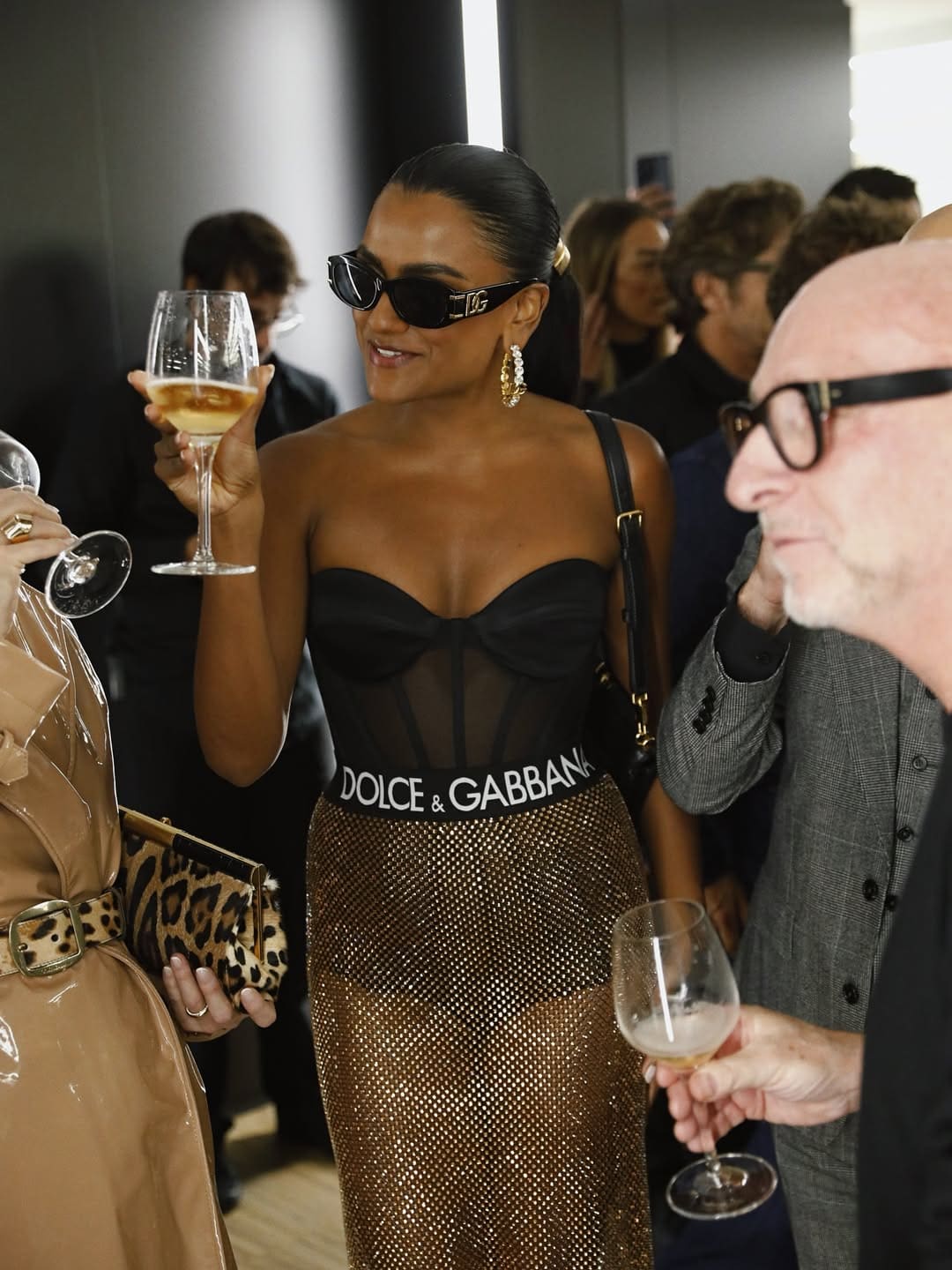
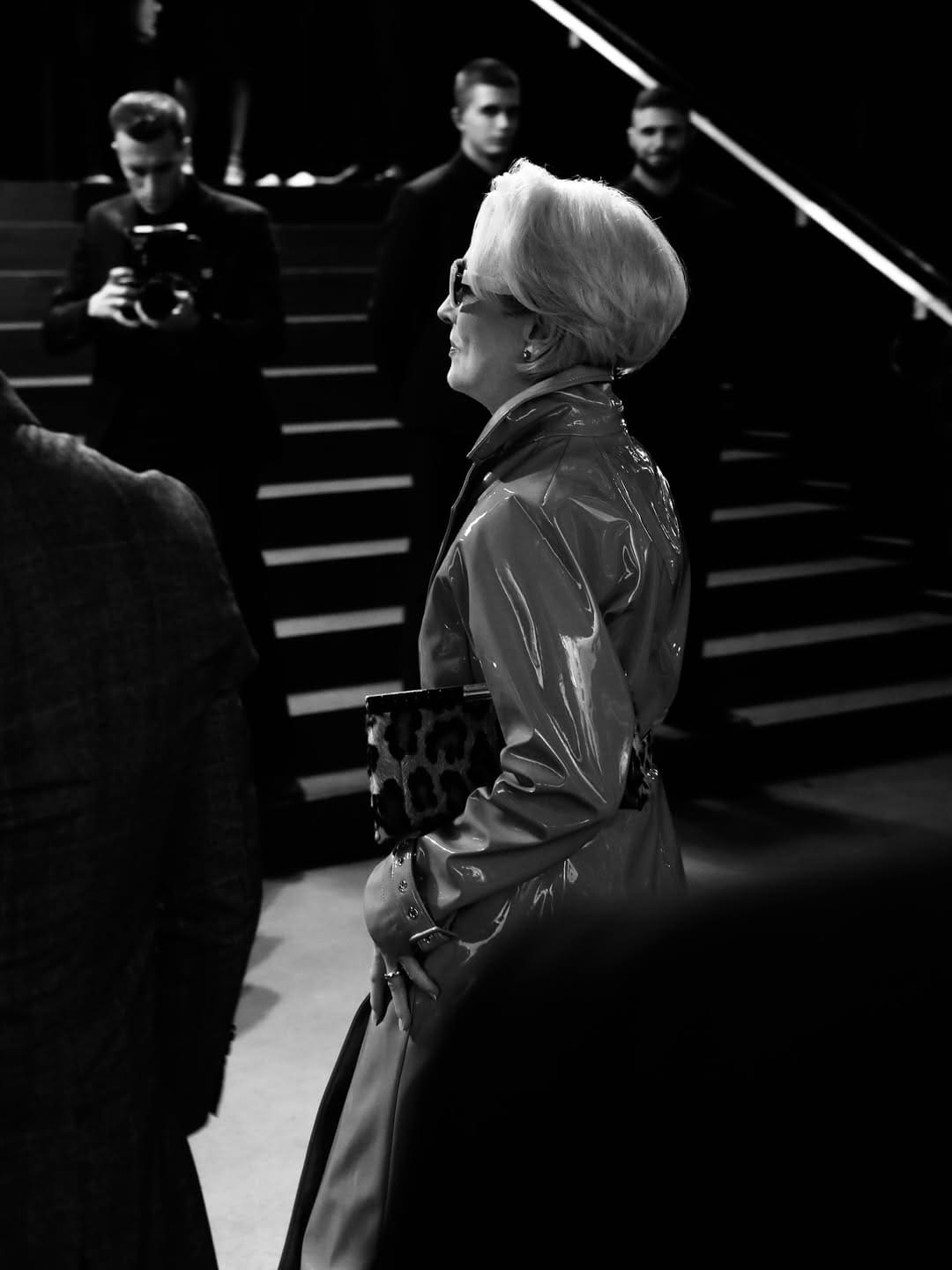
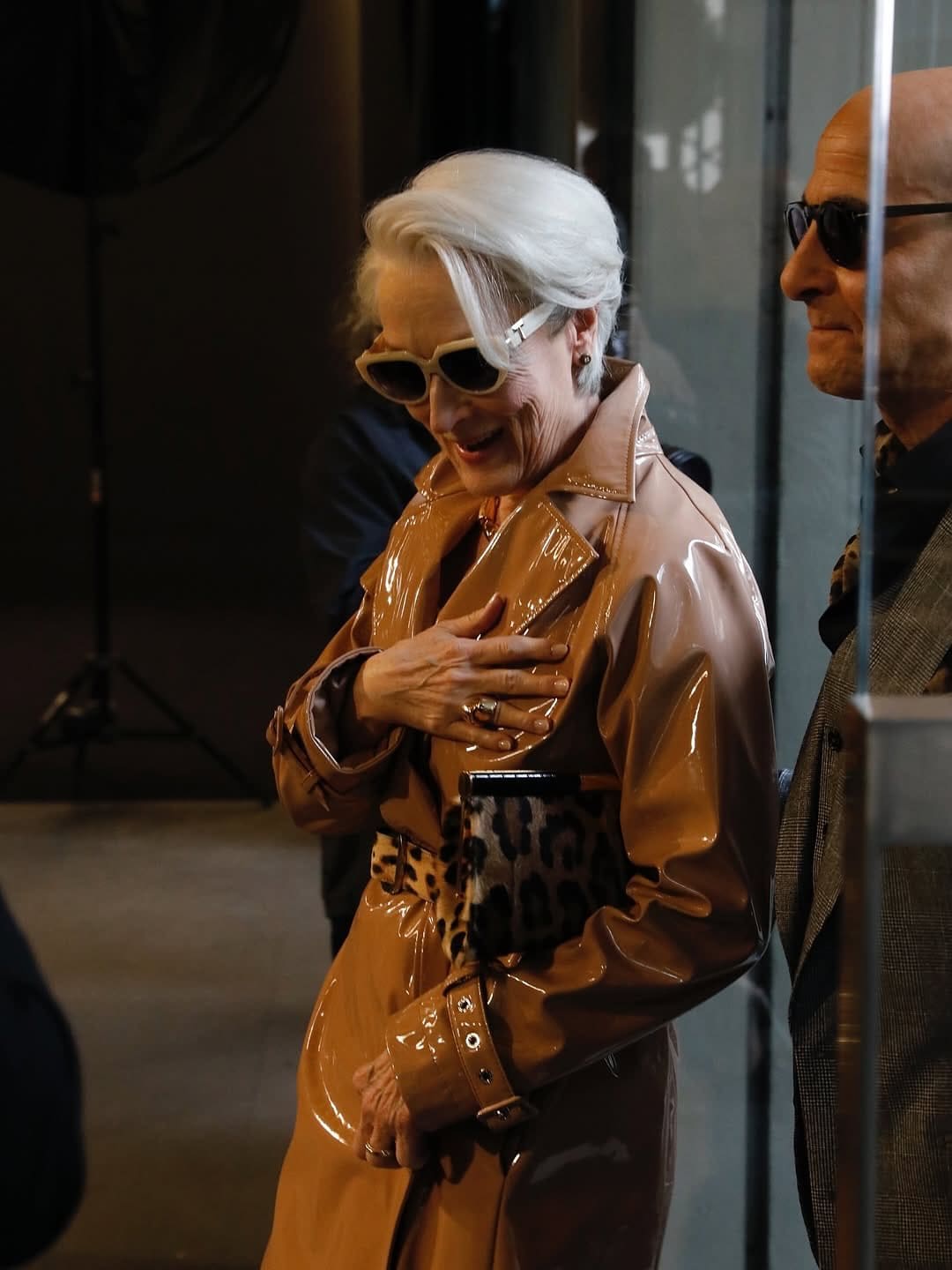
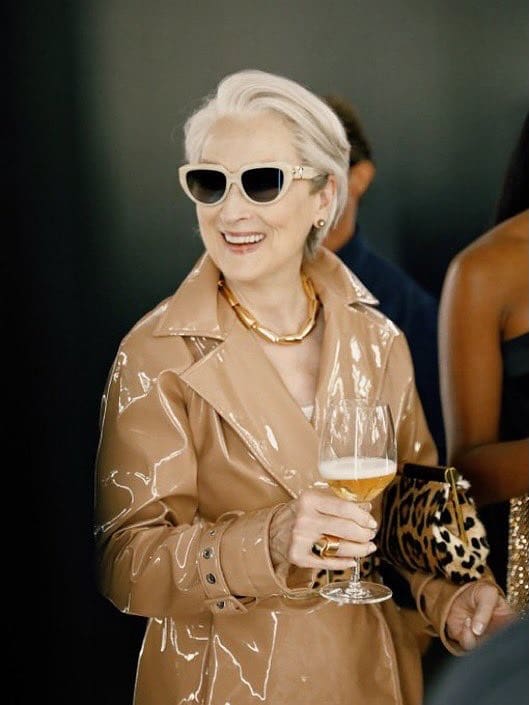
Fashion as Cultural Manuscript
Supported by Stefano Gabbana and Domenico Dolce, who invited this crossing of worlds into their theater, the act became more than marketing. It became a cultural manuscript. The runway here was no longer fabric and silhouette alone—it became text, layered with references, judgments, histories, and mythologies.
Runway as Institution, Not Illusion
This is why the moment belongs not only to cinema or promotion, but to fashion history. Because Runway is not an invention. It is not a script. It is not a role. Runway is the record, the stage, the institution that has shaped fashion’s narrative for three decades.
When Streep adjusted her glasses as Priestly, it was more than method acting. It was a tacit acknowledgment of Runway Magazine’s permanence—a cultural mirror too sharp to be dismissed as fiction.
Toward the Sequel, Toward the Future
The aftershow cocktail, where Streep and Tucci mingled with Stefano and Domenico, was not simply a celebration of cinema’s return. It was a ceremony of acknowledgment: that fashion houses and Hollywood alike recognize the power of this narrative to endure.
The upcoming Devil Wears Prada sequel is inevitable in its cultural weight, because it builds on what was always more than entertainment. It builds on the very institution of fashion authority. And Runway Magazine stands at the center of this axis—between film and fashion, history and future, perception and reality.
Closing Line
On that September night in Milan, fiction bowed to reality. Priestly was never just a role. Nigel was never just comic relief. They were, and remain, reflections of the living institution of fashion—Runway Magazine, where the line between storytelling and authority vanishes, and where every season is already history.
